| #
|
–£–ļ—Ä–į—ó–Ĺ—Ā—Ć–ļ–į –Ĺ–į–∑–≤–į
|
–Ę—É—Ä–Ķ—Ü—Ć–ļ–Ķ —Ė–ľ'—Ź
|
–ó–ĺ–Ī—Ä–į–∂–Ķ–Ĺ–Ĺ—ŹDellak Ali PaŇüa
|
–ü–ĺ—á–į—ā–ĺ–ļ
|
–ö—Ė–Ĺ–Ķ—Ü—Ć
|
–Ę–ł—ā—É–Ľ
|
–ü—Ä–ł–ľ—Ė—ā–ļ–ł[N 1]
|
–ü—Ä–į–≤–Ľ—Ė–Ĺ–Ĺ—Ź
|
| 1
|
–ģ–Ĺ—É—Ā-–Ņ–į—ą–į
|
Yunus PaŇüa
|
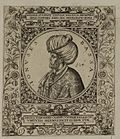
|
1517
|
1517
|
–Ď–Ķ–Ļ–Ľ–Ķ—Ä–Ī–Ķ–Ļ
|
[1][2]
|
–í—Ė–ī–ļ–Ľ–ł–ļ–į–Ľ–ł –∑–į –ļ–ĺ—Ä—É–Ņ—Ü—Ė—é
|
| 2
|
–•–į–Ļ–ł—Ä-–Ī–Ķ–Ļ
|
HayńĪr Bey
|
–Ě–Ķ–ľ–į—Ē –∑–ĺ–Ī—Ä–į–∂–Ķ–Ĺ–Ĺ—Ź
|
1517
|
1522
|
–Ď–Ķ–Ļ–Ľ–Ķ—Ä–Ī–Ķ–Ļ
|
[1][2][3][4]
|
–ü–ĺ–ľ–Ķ—Ä –Ĺ–į –Ņ–ĺ—Ā–į–ī—Ė
|
| 3
|
–ß–ĺ–Ī–į–Ĺ –ú—É—Ā—ā–į—Ą–į-–Ņ–į—ą–į
|
√áoban Mustafa PaŇüa
|
–Ě–Ķ–ľ–į—Ē –∑–ĺ–Ī—Ä–į–∂–Ķ–Ĺ–Ĺ—Ź
|
1522
|
1523
|
–Ď–Ķ–Ļ–Ľ–Ķ—Ä–Ī–Ķ–Ļ
|
[1][2][5][6][7]
|
–ü–ĺ–ī–į–≤–ł–≤ –Ī—É–Ĺ—ā –ľ–į–ľ–Ľ—é–ļ—Ė–≤[3]
|
| 4
|
–•–į—Ė–Ĺ –ź—Ö–ľ–Ķ–ī-–Ņ–į—ą–į
|
Hain Ahmed PaŇüa
|
–Ě–Ķ–ľ–į—Ē –∑–ĺ–Ī—Ä–į–∂–Ķ–Ĺ–Ĺ—Ź
|
1523
|
1524
|
–°—É–Ľ—ā–į–Ĺ
|
[1][2][3][7]
|
–ü–ĺ–≤—Ā—ā–į–≤, –ĺ–≥–ĺ–Ľ–ĺ—Ā–ł–≤ —Ā–Ķ–Ī–Ķ —Ā—É–Ľ—ā–į–Ĺ–ĺ–ľ —Ė –Ī—É–≤ —Ā—ā—Ä–į—á–Ķ–Ĺ–ł–Ļ[3][7]
|
| 5
|
“ź—é–∑–Ķ–Ľ—Ć–ī–∂–Ķ –ö–į—Ā—Ė–ľ-–Ņ–į—ą–į (1)
|
G√ľzelce KasńĪm PaŇüa
|
–Ě–Ķ–ľ–į—Ē –∑–ĺ–Ī—Ä–į–∂–Ķ–Ĺ–Ĺ—Ź
|
1524
|
1525
|
–Ď–Ķ–Ļ–Ľ–Ķ—Ä–Ī–Ķ–Ļ
|
[1][2][8]
|
|
| 6
|
–ü–į—Ä–≥–į–Ľ–ł –Ü–Ī—Ä–į–≥—Ė–ľ-–Ņ–į—ą–į
|
PargalńĪ Ibrahim PaŇüa
|

|
1525
|
1525
|
–Ď–Ķ–Ļ–Ľ–Ķ—Ä–Ī–Ķ–Ļ
|
[1][9]
|
–Ď—É–≤ –Ĺ–į –Ņ–ĺ—Ā—ā—É 3 –ľ—Ė—Ā—Ź—Ü—Ė, –ĺ—Ä–≥–į–Ĺ—Ė–∑—É–≤–į–≤ —Ü–ł–≤—Ė–Ľ—Ć–Ĺ—É —ā–į –≤—Ė–Ļ—Ā—Ć–ļ–ĺ–≤—É —Ā–ł—Ā—ā–Ķ–ľ—É –ě—Ā–ľ–į–Ĺ—Ā—Ć–ļ–ĺ—ó –Ą–≥–ł–Ņ—ā—É[9]
|
| 7
|
“ź—é–∑–Ķ–Ľ—Ć–ī–∂–Ķ –ö–į—Ā—Ė–ľ-–Ņ–į—ą–į (2)
|
G√ľzelce KasńĪm PaŇüa
|
–Ě–Ķ–ľ–į—Ē –∑–ĺ–Ī—Ä–į–∂–Ķ–Ĺ–Ĺ—Ź
|
1525
|
1525
|
–Ď–Ķ–Ļ–Ľ–Ķ—Ä–Ī–Ķ–Ļ
|
[1][2]
|
|
| 8
|
–•–į–ī–ł–ľ –°—É–Ľ–Ķ–Ļ–ľ–į–Ĺ-–Ņ–į—ą–į (1)
|
HadńĪm S√ľleyman PaŇüa
|

|
1525
|
1535
|
–Ď–Ķ–Ļ–Ľ–Ķ—Ä–Ī–Ķ–Ļ
|
[1][2]
|
|
| 9
|
–Ē—Ė–≤–į–Ĺ–Ķ –•—é—Ā—Ä–Ķ–≤-–Ņ–į—ą–į
|
Divane H√ľsrev PaŇüa
|
–Ě–Ķ–ľ–į—Ē –∑–ĺ–Ī—Ä–į–∂–Ķ–Ĺ–Ĺ—Ź
|
1535
|
1537
|
–Ď–Ķ–Ļ–Ľ–Ķ—Ä–Ī–Ķ–Ļ
|
[1][2]
|
|
| 10
|
–•–į–ī–ł–ľ –°—É–Ľ–Ķ–Ļ–ľ–į–Ĺ-–Ņ–į—ą–į (2)
|
HadńĪm S√ľleyman PaŇüa
|

|
1537
|
1538
|
–Ď–Ķ–Ļ–Ľ–Ķ—Ä–Ī–Ķ–Ļ
|
[1][2]
|
|
| 11
|
–Ē–į–≤—É–ī-–Ņ–į—ą–į
|
Davud PaŇüa
|
–Ě–Ķ–ľ–į—Ē –∑–ĺ–Ī—Ä–į–∂–Ķ–Ĺ–Ĺ—Ź
|
1538
|
1549
|
–Ď–Ķ–Ļ–Ľ–Ķ—Ä–Ī–Ķ–Ļ
|
[1][2][10]
|
–í–ĺ—Ä–ĺ–≥—É–≤–į–≤ –∑ –†—É—Ā—ā–Ķ–ľ-–Ņ–į—ą–ĺ–Ļ;[10], –Ņ–ĺ–ľ–Ķ—Ä –Ĺ–į –Ņ–ĺ—Ā—ā—É.
|
|
|
–õ–į–Ľ–į –ö–į—Ä–į –ú—É—Ā—ā–į—Ą–į-–Ņ–į—ą–į
|
Lala Kara Mustafa PaŇüa
|
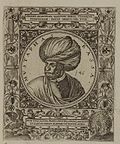
|
1549
|
1549
|
–ö–į–Ļ–ľ–į–ļ–į–ľ
|
[11][12]
|
–Ě–į –Ņ–ĺ—Ā—ā—É –ļ—Ė–Ľ—Ć–ļ–į –ľ—Ė—Ā—Ź—Ü—Ė–≤
|
| 12
|
–°–Ķ–ľ—Ė–∑ –ź–Ľ—Ė-–Ņ–į—ą–į
|
Semiz Ali PaŇüa
|
–Ě–Ķ–ľ–į—Ē –∑–ĺ–Ī—Ä–į–∂–Ķ–Ĺ–Ĺ—Ź
|
1549
|
1553
|
–Ď–Ķ–Ļ–Ľ–Ķ—Ä–Ī–Ķ–Ļ
|
[1][2][10]
|
–ü—Ä–ł–∑–Ĺ–į—á–Ķ–Ĺ–ł–Ļ –Ĺ–į —Ė–Ĺ—ą—É –Ņ–ĺ—Ā–į–ī—É –≤ –ö–ĺ–Ĺ—Ā—ā–į–Ĺ—ā–ł–Ĺ–ĺ–Ņ–ĺ–Ľ—Ė
|
| 13
|
–Ē—É–ļ–į–ļ—Ė–Ĺ–∑–į–ī–Ķ –ú–Ķ—Ö–ľ–Ķ–ī-–Ņ–į—ą–į
|
Dukakinzade Mehmed PaŇüa
|
–Ě–Ķ–ľ–į—Ē –∑–ĺ–Ī—Ä–į–∂–Ķ–Ĺ–Ĺ—Ź
|
1553
|
1556
|
–Ď–Ķ–Ļ–Ľ–Ķ—Ä–Ī–Ķ–Ļ
|
[1][2][13][14]
|
–°–Ņ—Ė–≤–į–≤ –Ņ—Ė—Ā–Ĺ—Ė —É –≥—Ä–ĺ–ľ–į–ī—Ā—Ć–ļ–ł—Ö –ľ—Ė—Ā—Ü—Ź—Ö –Ņ—Ė–ī –≥—Ė—ā–į—Ä—É, —Ā—ā—Ä–į—á–Ķ–Ĺ–ł–Ļ –∑–į –Ņ–ĺ—Ä—É—ą–Ķ–Ĺ–Ĺ—Ź –®–į—Ä—Ė–į—ā—É[13]
|
| 14
|
–Ü—Ā–ļ–į–Ĺ–ī–Ķ—Ä-–Ņ–į—ą–į
|
Iskender PaŇüa
|
–Ě–Ķ–ľ–į—Ē –∑–ĺ–Ī—Ä–į–∂–Ķ–Ĺ–Ĺ—Ź
|
1556
|
1559
|
–Ď–Ķ–Ļ–Ľ–Ķ—Ä–Ī–Ķ–Ļ
|
[1][2][14][15]
|
–Ď—É–Ľ–ĺ –Ņ—Ä–ĺ–≤–Ķ–ī–Ķ–Ĺ–ĺ –Ī–į–≥–į—ā–ĺ –≥—Ä–ĺ–ľ–į–ī—Ā—Ć–ļ–ł—Ö —Ä–ĺ–Ī—Ė—ā –ľ—Ė–∂ –Ĺ–ł–ľ–ł –Ď–į–Ī –ó—É–≤–Ķ–Ļ–Ľ–į —ā–į –Ď–į–Ī –į–Ľ—Ć-–ö—Ö–į–Ľ–ļ[16]
|
| 15
|
–°–ĺ—Ą—É –•–į–ī–ł–ľ –ź–Ľ—Ė-–Ņ–į—ą–į
|
Sofu HadńĪm Ali PaŇüa
|
–Ě–Ķ–ľ–į—Ē –∑–ĺ–Ī—Ä–į–∂–Ķ–Ĺ–Ĺ—Ź
|
1559
|
1560
|
–Ď–Ķ–Ļ–Ľ–Ķ—Ä–Ī–Ķ–Ļ
|
[1][2][17]
|
Also known as Sufi Ali PaŇüa[17] or HadńĪm Ali PaŇüa;[1][2] died in office[1]
|
| 16
|
–ö–į—Ä–į –®–į—Ö—Ė–Ĺ –ú—É—Ā—ā–į—Ą–į-–Ņ–į—ą–į (–ß–ĺ—Ä–Ĺ–ł–Ļ —Ź—Ā—ā—Ä—É–Ī)
|
Kara Ňěahin Mustafa PaŇüa
|
–Ě–Ķ–ľ–į—Ē –∑–ĺ–Ī—Ä–į–∂–Ķ–Ĺ–Ĺ—Ź
|
1560
|
1563
|
–Ď–Ķ–Ļ–Ľ–Ķ—Ä–Ī–Ķ–Ļ
|
[1][2][18]
|
–ó–į—Ā–Ĺ–ĺ–≤–Ĺ–ł–ļ –†—Ė–ī–≤–į–Ĺ—Ā—Ć–ļ–ĺ—ó –ī–ł–Ĺ–į—Ā—ā—Ė—Ź, –ļ–ĺ–Ľ–ł—ą–Ĺ—Ė–Ļ –Ĺ–į–ľ—Ė—Ā–Ĺ–ł–ļ –≤ –ď–į–∑—Ė
|
| 17
|
–ú—É–Ķ–∑–ł–Ĺ–∑–į–ī–Ķ –ź–Ľ—Ė-–Ņ–į—ą–į
|
M√ľezzinzade Ali PaŇüa
|
–Ě–Ķ–ľ–į—Ē –∑–ĺ–Ī—Ä–į–∂–Ķ–Ĺ–Ĺ—Ź
|
1563
|
1566
|
–Ď–Ķ–Ļ–Ľ–Ķ—Ä–Ī–Ķ–Ļ
|
[1][2][13]
|
–Ę–į–ļ–ĺ–∂ –≤—Ė–ī–ĺ–ľ–ł–Ļ —Ź–ļ –°—É—Ą—Ė –į–Ī–ĺ –°–ĺ—Ą—É –ź–Ľ—Ė-–Ņ–į—ą–į[13]
|
| 18
|
–ú–į—Ö–ľ—É–ī-–Ņ–į—ą–į
|
Mahmud PaŇüa
|
–Ě–Ķ–ľ–į—Ē –∑–ĺ–Ī—Ä–į–∂–Ķ–Ĺ–Ĺ—Ź
|
1566
|
1567
|
–Ď–Ķ–Ļ–Ľ–Ķ—Ä–Ī–Ķ–Ļ
|
[19][20]
|
–ü–ĺ–Ī—É–ī—É–≤–į–≤ –ú–Ķ—á–Ķ—ā—Ć –ź–Ľ—Ć-–ú–į—Ö–ľ–ĺ—É–ī—Ė—Ź —É–Ī–ł—ā–ł–Ļ –Ĺ–į –Ņ–ĺ—Ā–į–ī—Ė –≤ —Ä–Ķ–∑—É–Ľ—Ć—ā–į—ā—Ė –Ņ–Ķ—Ä–Ķ—Ā—ā—Ä—Ė–Ľ–ļ–ł[20]
|
| 19
|
–ö–ĺ–ī–∂–į –°—Ė–Ĺ–į–Ĺ-–Ņ–į—ą–į (1)
|
Koca Sinan PaŇüa
|

|
1567
|
1569
|
–Ď–Ķ–Ļ–Ľ–Ķ—Ä–Ī–Ķ–Ļ
|
[1][2][10]
|
|
| 20
|
–ß–Ķ—Ä–ļ–Ķ—Ā –Ü—Ā–ļ–į–Ĺ–ī–Ķ—Ä-–Ņ–į—ą–į
|
√áerkes Iskender PaŇüa
|
–Ě–Ķ–ľ–į—Ē –∑–ĺ–Ī—Ä–į–∂–Ķ–Ĺ–Ĺ—Ź
|
1569
|
1571
|
–Ď–Ķ–Ļ–Ľ–Ķ—Ä–Ī–Ķ–Ļ
|
[1][2][21][22][23]
|
Known locally as al-Faqih, "the jurist"[24]
|
| 21
|
–ö–ĺ–ī–∂–į –°—Ė–Ĺ–į–Ĺ-–Ņ–į—ą–į (2)
|
Koca Sinan PaŇüa
|

|
1571
|
1573
|
–Ď–Ķ–Ļ–Ľ–Ķ—Ä–Ī–Ķ–Ļ
|
[1][2][10]
|
|
| 22
|
–•—é—Ā–Ķ–Ļ—ó–Ĺ –ü–į—ą–į –Ď–ĺ–Ľ—Ć—Ź–Ĺ—Ė—á
|
H√ľseyin PaŇüa Boljanińá
|
–Ě–Ķ–ľ–į—Ē –∑–ĺ–Ī—Ä–į–∂–Ķ–Ĺ–Ĺ—Ź
|
1573
|
1574
|
–Ď–Ķ–Ļ–Ľ–Ķ—Ä–Ī–Ķ–Ļ
|
[1][25][26][27]
|
–ü—Ė–ī —á–į—Ā –Ļ–ĺ–≥–ĺ –Ņ—Ä–į–≤–Ľ—Ė–Ĺ–Ĺ—Ź –∑'—Ź–≤–ł–Ľ–ĺ—Ā—Ź –Ī–į–≥–į—ā–ĺ –ļ—Ä–į–ī—Ė—ó–≤[25]
|
| 23
|
–•–į–ī—Ė–ľ –ú–Ķ—Ā—Ė—Ö-–Ņ–į—ą–į
|
Hadim Mesih PaŇüa
|
–Ě–Ķ–ľ–į—Ē –∑–ĺ–Ī—Ä–į–∂–Ķ–Ĺ–Ĺ—Ź
|
1574
|
1580
|
–Ď–Ķ–Ļ–Ľ–Ķ—Ä–Ī–Ķ–Ļ
|
[1][2][13][25]
|
–°—ā—Ä–į—ā–ł–≤ –Ī–į–≥–į—ā–ĺ –ļ—Ä–į–ī—Ė—ó–≤, –Ņ—Ė—Ā–Ľ—Ź –Ļ–ĺ–≥–ĺ –Ņ—Ä–į–≤–Ľ—Ė–Ĺ–Ĺ—Ź –ļ—Ä–ł–ľ—Ė–Ĺ–ĺ–≥–Ķ–Ĺ–Ĺ–į —Ā–ł—ā—É–į—Ü—Ė—Ź —É –ļ—Ä–į—ó–Ĺ—Ė —Ā—ā–į–Ī—Ė–Ľ—Ė–∑—É–≤–į–Ľ–į—Ā—Ź[25]
|
| 24
|
–•–į–ī–ł–ľ –•–į—Ā–į–Ĺ-–Ņ–į—ą–į
|
HadńĪm Hasan PaŇüa
|
–Ě–Ķ–ľ–į—Ē –∑–ĺ–Ī—Ä–į–∂–Ķ–Ĺ–Ĺ—Ź
|
1580
|
1583
|
–Ď–Ķ–Ļ–Ľ–Ķ—Ä–Ī–Ķ–Ļ
|
[1][2][28]
|
–£–≤'—Ź–∑–Ĺ–Ķ–Ĺ–ł–Ļ –≤ –ö–ĺ–Ĺ—Ā—ā–į–Ĺ—ā–ł–Ĺ–ĺ–Ņ–ĺ–Ľ—Ė[28]
|
| 25
|
–Ē–į–ľ–į—ā –Ü–Ī—Ä–į—Ö—Ė–ľ-–Ņ–į—ą–į
|
Damat Ibrahim PaŇüa
|
–Ě–Ķ–ľ–į—Ē –∑–ĺ–Ī—Ä–į–∂–Ķ–Ĺ–Ĺ—Ź
|
1583
|
1585
|
–Ď–Ķ–Ļ–Ľ–Ķ—Ä–Ī–Ķ–Ļ
|
[1][2]
|
|
| 26
|
–Ē–Ķ—Ą—ā–Ķ—Ä–ī–į—Ä –°—Ė–Ĺ–į–Ĺ-–Ņ–į—ą–į
|
Defterdar Sinan PaŇüa
|
–Ě–Ķ–ľ–į—Ē –∑–ĺ–Ī—Ä–į–∂–Ķ–Ĺ–Ĺ—Ź
|
1585
|
1587
|
–Ď–Ķ–Ļ–Ľ–Ķ—Ä–Ī–Ķ–Ļ
|
[1][2][3][29]
|
–ó–≤—Ė–Ľ—Ć–Ĺ–Ķ–Ĺ–ł–Ļ –Ņ—Ė—Ā–Ľ—Ź —ā–ĺ–≥–ĺ, —Ź–ļ –Ĺ–Ķ –∑–ľ—Ė–≥ –∑—Ė–Ī—Ä–į—ā–ł –ī–ĺ—Ā—ā–į—ā–Ĺ—é –ļ—Ė–Ľ—Ć–ļ—Ė—Ā—ā—Ć –Ņ–ĺ–ī–į—ā–ļ—Ė–≤[29]
|
| 27
|
–ö–į—Ä–į –ģ–≤–Ķ–Ļ—Ā-–Ņ–į—ą–į
|
Kara √úveys Pascha
|
–Ě–Ķ–ľ–į—Ē –∑–ĺ–Ī—Ä–į–∂–Ķ–Ĺ–Ĺ—Ź
|
1587
|
1590
|
–Ď–Ķ–Ļ–Ľ–Ķ—Ä–Ī–Ķ–Ļ
|
[3][30][31]
|
–ü–ĺ–ľ–Ķ—Ä –Ĺ–į –Ņ–ĺ—Ā—ā—É[31]
|
| 28
|
–•–į–ī–ł–ľ –•–į—Ą–ł–∑ –ź—Ö–ľ–Ķ–ī-–Ņ–į—ą–į
|
HadńĪm HafńĪz Ahmed PaŇüa
|
–Ě–Ķ–ľ–į—Ē –∑–ĺ–Ī—Ä–į–∂–Ķ–Ĺ–Ĺ—Ź
|
1590
|
1594
|
–Ď–Ķ–Ļ–Ľ–Ķ—Ä–Ī–Ķ–Ļ
|
[1][2]
|
–Ę–į–ļ–ĺ–∂ –Ī—É–≤ –≥—É–Ī–Ķ—Ä–Ĺ–į—ā–ĺ—Ä–ĺ–ľ –Ď—É—Ä—Ā–ł
|
| 29
|
–ö—É—Ä–ī –ú–Ķ—Ö–ľ–Ķ–ī-–Ņ–į—ą–į
|
Kurd Mehmed PaŇüa
|
–Ě–Ķ–ľ–į—Ē –∑–ĺ–Ī—Ä–į–∂–Ķ–Ĺ–Ĺ—Ź
|
1594
|
1596
|
–Ď–Ķ–Ļ–Ľ–Ķ—Ä–Ī–Ķ–Ļ
|
[1][2]
|
|
| 30
|
–ē–ľ—Ė—Ä –ú–Ķ—Ö–ľ–Ķ–ī-–Ņ–į—ą–į
|
Emir Mehmed PaŇüa
|
–Ě–Ķ–ľ–į—Ē –∑–ĺ–Ī—Ä–į–∂–Ķ–Ĺ–Ĺ—Ź
|
1596
|
1598
|
–Ď–Ķ–Ļ–Ľ–Ķ—Ä–Ī–Ķ–Ļ
|
[1][2][21][24][32][33]
|
–í—Ė–ī–ĺ–ľ–ł–Ļ —Ź–ļ –į–Ľ—Ć-–®–į—Ä—Ė—Ą —ā–į –°–Ķ—ó–ī[24]
|
| 31
|
–•–ł–∑–ł—Ä-–Ņ–į—ą–į
|
HńĪzńĪr PaŇüa
|
–Ě–Ķ–ľ–į—Ē –∑–ĺ–Ī—Ä–į–∂–Ķ–Ĺ–Ĺ—Ź
|
1598
|
1601
|
–Ď–Ķ–Ļ–Ľ–Ķ—Ä–Ī–Ķ–Ļ
|
[1][2][33][34]
|
|
| 32
|
–Į–≤—É–∑ –ź–Ľ—Ė-–Ņ–į—ą–į
|
Yavuz Ali PaŇüa
|
–Ě–Ķ–ľ–į—Ē –∑–ĺ–Ī—Ä–į–∂–Ķ–Ĺ–Ĺ—Ź
|
1601
|
1603
|
–Ď–Ķ–Ļ–Ľ–Ķ—Ä–Ī–Ķ–Ļ
|
[1][2][33][35][36][note 1]
|
Appointed as Grand Vizier[35][36]
|
| 33
|
–ú–į–ļ—ā—É–Ľ –•–į–ī–∂–ł –Ü–Ī—Ä–į–≥—Ė–ľ-–Ņ–į—ą–į
|
Maktul HacńĪ Ibrahim PaŇüa
|
–Ě–Ķ–ľ–į—Ē –∑–ĺ–Ī—Ä–į–∂–Ķ–Ĺ–Ĺ—Ź
|
1604
|
1604
|
–Ď–Ķ–Ļ–Ľ–Ķ—Ä–Ī–Ķ–Ļ
|
[1][2][33][37][38]
|
–£–Ī–ł—ā–ł–Ļ –≤ —Ä–Ķ–∑—É–Ľ—Ć—ā–į—ā—Ė –∑–≥–ĺ–≤–ĺ—Ä—É —Ā–ł–Ņ–į—Ö—Ė–≤[39][40][41]
|
| 34
|
–•–į–ī–ł–ľ –ú–Ķ—Ö–ľ–Ķ–ī-–Ņ–į—ą–į
|
HadńĪm Mehmed PaŇüa
|
–Ě–Ķ–ľ–į—Ē –∑–ĺ–Ī—Ä–į–∂–Ķ–Ĺ–Ĺ—Ź
|
1604
|
1605
|
–Ď–Ķ–Ļ–Ľ–Ķ—Ä–Ī–Ķ–Ļ
|
[1][33][41][note 2]
|
–°–Ņ—Ä–ĺ–Ī—É–≤–į–≤ –Ņ—Ä–ł–ī—É—ą–ł—ā–ł –Ņ–ĺ–≤—Ā—ā–į–Ĺ–Ĺ—Ź —Ā–ł–Ņ–į—Ö—Ė–≤, –į–Ľ–Ķ –Ĺ–Ķ–≤–ī–į–Ľ–ĺ[41]
|
| 35
|
–Ą–ľ–Ķ–Ĺ–Ľ—Ė –•–į—Ā–į–Ĺ-–Ņ–į—ą–į
|
Yemenli Hasan PaŇüa
|
–Ě–Ķ–ľ–į—Ē –∑–ĺ–Ī—Ä–į–∂–Ķ–Ĺ–Ĺ—Ź
|
1605
|
1607
|
–Ď–Ķ–Ļ–Ľ–Ķ—Ä–Ī–Ķ–Ļ
|
[1][2][33][42][43]
|
–Ę–į–ļ–ĺ–∂ –Ī–Ķ–Ļ–Ľ–Ķ—Ä–Ī–Ķ–Ļ –Ą–ľ–Ķ–Ĺ—É (1580‚Äď1604)[42][43]
|
| 36
|
–ě–ļ—é–∑ –ú–Ķ—Ö–ľ–Ķ–ī-–Ņ–į—ą–į
|
√Ėk√ľz Mehmed PaŇüa
|
–Ě–Ķ–ľ–į—Ē –∑–ĺ–Ī—Ä–į–∂–Ķ–Ĺ–Ĺ—Ź
|
1607
|
1611
|
–Ď–Ķ–Ļ–Ľ–Ķ—Ä–Ī–Ķ–Ļ
|
[1][2][33][44][45][46][47]
|
–í—Ė–ī–ĺ–ľ–ł–Ļ —Ź–ļ "kul kńĪran" (–Ē—Ä–Ķ—Ā—É–≤–į–Ľ—Ć–Ĺ–ł–ļ —Ä–į–Ī—Ė–≤) –∑–į –Ņ—Ä–ł–ī—É—ą–Ķ–Ĺ–Ĺ—Ź –∑–į–ļ–ĺ–Ľ–ĺ—ā—É —Ā–ł–Ņ–į—Ö—Ė–≤.[44][45][46][47]
|
| 37
|
–°–ĺ—Ą—É –ú–Ķ—Ö–ľ–Ķ–ī-–Ņ–į—ą–į
|
Sofu Mehmed PaŇüa
|
–Ě–Ķ–ľ–į—Ē –∑–ĺ–Ī—Ä–į–∂–Ķ–Ĺ–Ĺ—Ź
|
1611
|
1615
|
–Ď–Ķ–Ļ–Ľ–Ķ—Ä–Ī–Ķ–Ļ
|
[1][2][21][33][note 3]
|
|
| 38
|
–Ě—Ė—ą–į–Ĺ–ī–∂–ł –ź—Ö–ľ–Ķ–ī-–ü–į—ą–į
|
NiŇüancńĪ Ahmed PaŇüa
|
–Ě–Ķ–ľ–į—Ē –∑–ĺ–Ī—Ä–į–∂–Ķ–Ĺ–Ĺ—Ź
|
1615
|
1618
|
–Ď–Ķ–Ļ–Ľ–Ķ—Ä–Ī–Ķ–Ļ
|
[1][2][33]
|
–ö–ĺ–ľ–į–Ĺ–ī–ł—Ä —Ź–Ĺ–ł—á–į—Ä
|
| 39
|
–õ–Ķ—Ą–ļ–Ķ–Ľ—Ė –ú—É—Ā—ā–į—Ą–į-–Ņ–į—ą–į
|
Lefkeli Mustafa PaŇüa
|
–Ě–Ķ–ľ–į—Ē –∑–ĺ–Ī—Ä–į–∂–Ķ–Ĺ–Ĺ—Ź
|
1618
|
1618
|
–Ď–Ķ–Ļ–Ľ–Ķ—Ä–Ī–Ķ–Ļ
|
[1][2][33][48]
|
–ü—Ä–ĺ—Ā—É–≤–į–≤ —á–Ľ–Ķ–Ĺ—Ė–≤ —Ā–≤–ĺ—Ē—ó —Ā—Ė–ľ'—ó, —Ä–ĺ–∑–≤–ł–≤–į–≤ –ļ–ĺ—Ä—É–Ņ—Ü—Ė—é[48]
|
| 40
|
–Ē–∂–į—Ą–Ķ—Ä-–Ņ–į—ą–į
|
Cafer PaŇüa
|
–Ě–Ķ–ľ–į—Ē –∑–ĺ–Ī—Ä–į–∂–Ķ–Ĺ–Ĺ—Ź
|
1618
|
1619
|
–Ď–Ķ–Ļ–Ľ–Ķ—Ä–Ī–Ķ–Ļ
|
[1][2][33][49]
|
–ě—ā—Ä–ł–ľ–į–≤ –ĺ—Ā–≤—Ė—ā—É –≤ —Ä—Ė–∑–Ĺ–ł—Ö –Ĺ–į—É–ļ–į—Ö —Ė –ļ–ĺ–Ľ–ł—ą–Ĺ—Ė–Ļ –≥—É–Ī–Ķ—Ä–Ĺ–į—ā–ĺ—Ä –Ą–ľ–Ķ–Ĺ—É[49]
|
| 41
|
–•–į–ľ—Ė–ī—Ė –ú—É—Ā—ā–į—Ą–į-–Ņ–į—ą–į
|
Hamidi Mustafa PaŇüa
|
–Ě–Ķ–ľ–į—Ē –∑–ĺ–Ī—Ä–į–∂–Ķ–Ĺ–Ĺ—Ź
|
1619
|
1620
|
–Ď–Ķ–Ļ–Ľ–Ķ—Ä–Ī–Ķ–Ļ
|
[1][49]
|
–ó–≤—Ė–Ľ—Ć–Ĺ–Ķ–Ĺ–ł–Ļ –∑–į –Ņ—Ä–ĺ—ā–ł–ī—Ė—é —ā–ĺ—Ä–≥—Ė–≤–Ľ—Ė[33][50]
|
| 42
|
–ú–Ķ—Ä–Ķ –•—É—Ā–Ķ–Ļ–Ĺ-–Ņ–į—ą–į
|
Mere H√ľseyin PaŇüa
|
–Ě–Ķ–ľ–į—Ē –∑–ĺ–Ī—Ä–į–∂–Ķ–Ĺ–Ĺ—Ź
|
1620
|
1622
|
–Ď–Ķ–Ļ–Ľ–Ķ—Ä–Ī–Ķ–Ļ
|
[1][2][33][51]
|
–ó–≤—Ė–Ľ—Ć–Ĺ–Ķ–Ĺ–ł–Ļ –Ņ—Ė—Ā–Ľ—Ź —ā–ĺ–≥–ĺ —Ź–ļ —Ä–ĺ–∑–Ľ–ł–≤ –Ě—Ė–Ľ—É —Ā–Ņ—Ä–ĺ–≤–ĺ–ļ—É–≤–į–≤ –Ņ–ĺ—Ā—É—Ö—É[52]
|
| 43
|
–Ď—Ė–Ī–Ķ—Ä –ú–Ķ—Ö–ľ–Ķ–ī-–Ņ–į—ą–į
|
Biber Mehmed PaŇüa
|
–Ě–Ķ–ľ–į—Ē –∑–ĺ–Ī—Ä–į–∂–Ķ–Ĺ–Ĺ—Ź
|
1622
|
1622
|
–Ď–Ķ–Ļ–Ľ–Ķ—Ä–Ī–Ķ–Ļ
|
[1][33][53][54]
|
–ó–≤—Ė–Ľ—Ć–Ĺ–Ķ–Ĺ–ł–Ļ –Ņ—Ė—Ā–Ľ—Ź 75 –ī–Ĺ—Ė–≤[53]
|
| 44
|
–°—Ė–Ľ–į—Ö–ī–į—Ä –Ü–Ī—Ä–į—Ö—Ė–ľ-–Ņ–į—ą–į
|
Silahdar Ibrahim PaŇüa
|
–Ě–Ķ–ľ–į—Ē –∑–ĺ–Ī—Ä–į–∂–Ķ–Ĺ–Ĺ—Ź
|
1622
|
1623
|
–Ď–Ķ–Ļ–Ľ–Ķ—Ä–Ī–Ķ–Ļ
|
[1][2][33][53]
|
–Ď—É–≤ –∑–≤–ł–Ĺ—É–≤–į—á–Ķ–Ĺ–ł–Ļ —É —Ą—Ė–Ĺ–į–Ĺ—Ā–ĺ–≤–ł—Ö –ľ–į—Ö—Ė–Ĺ–į—Ü—Ė—Ź—Ö[53]
|
| 45
|
–ö–į—Ä–į –ú—É—Ā—ā–į—Ą–į-–Ņ–į—ą–į (1)
|
Kara Mustafa PaŇüa
|
–Ě–Ķ–ľ–į—Ē –∑–ĺ–Ī—Ä–į–∂–Ķ–Ĺ–Ĺ—Ź
|
1623
|
1623
|
–Ď–Ķ–Ļ–Ľ–Ķ—Ä–Ī–Ķ–Ļ
|
[1][3][33][55]
|
|
| 46
|
–ß–Ķ—ą—ā–Ķ–ī–∂—Ė –ź–Ľ—Ė-–Ņ–į—ą–į
|
√áeŇüteci Ali PaŇüa
|
–Ě–Ķ–ľ–į—Ē –∑–ĺ–Ī—Ä–į–∂–Ķ–Ĺ–Ĺ—Ź
|
1623
|
1623
|
–Ď–Ķ–Ļ–Ľ–Ķ—Ä–Ī–Ķ–Ļ
|
[1][2][3][33][56][57]
|
–°–ĺ–Ľ–ī–į—ā–ł –≤—Ė–ī–Ĺ–ĺ–≤–ł–Ľ–ł –ö–į—Ä–į –ú—É—Ā—ā–į—Ą—É-–Ņ–į—ą—É[33][56][57]
|
| 47
|
–ö–į—Ä–į –ú—É—Ā—ā–į—Ą–į-–Ņ–į—ą–į (2)
|
Kara Mustafa PaŇüa
|
–Ě–Ķ–ľ–į—Ē –∑–ĺ–Ī—Ä–į–∂–Ķ–Ĺ–Ĺ—Ź
|
1624
|
1626
|
–Ď–Ķ–Ļ–Ľ–Ķ—Ä–Ī–Ķ–Ļ
|
[1][2][3][33][56]
|
–°–ĺ–Ľ–ī–į—ā–ł, —Ä–ĺ–∑–Ľ—é—á–Ķ–Ĺ—Ė —ą–≤–ł–ī–ļ–ĺ—é –∑–ľ—Ė–Ĺ–ĺ—é –≥—É–Ī–Ķ—Ä–Ĺ–į—ā–ĺ—Ä—Ė–≤, –≤—Ė–ī–Ĺ–ĺ–≤–ł–Ľ–ł –Ļ–ĺ–≥–ĺ[3][33][56]
|
| 48
|
–Ď–į–Ļ—Ä–į–ľ-–Ņ–į—ą–į
|
Bayram PaŇüa
|
–Ě–Ķ–ľ–į—Ē –∑–ĺ–Ī—Ä–į–∂–Ķ–Ĺ–Ĺ—Ź
|
1626
|
1628
|
–Ď–Ķ–Ļ–Ľ–Ķ—Ä–Ī–Ķ–Ļ
|
[1][2][33][58]
|
–Ü–Ĺ–≤–Ķ—Ā—ā—É–≤–į–≤ —É —Ä–ĺ–∑–≤–ł—ā–ĺ–ļ —ā–ĺ—Ä–≥—Ė–≤–Ľ—Ė[58]
|
| 49
|
–Ę–į–Ī–į–Ĺ–ł—Ź—Ā—Ā–ł –ú–Ķ—Ö–ľ–Ķ–ī-–Ņ–į—ą–į
|
TabanńĪyassńĪ Mehmed PaŇüa
|
–Ě–Ķ–ľ–į—Ē –∑–ĺ–Ī—Ä–į–∂–Ķ–Ĺ–Ĺ—Ź
|
1628
|
1630
|
–Ď–Ķ–Ļ–Ľ–Ķ—Ä–Ī–Ķ–Ļ
|
[1][2][33][59]
|
–õ–ł—ą–Ķ 6 —Ä–į–∑—Ė–≤ –∑‚Äô—Ź–≤–Ľ—Ź–≤—Ā—Ź –Ĺ–į –Ņ—É–Ī–Ľ—Ė—Ü—Ė[60]
|
| 50
|
–ö–ĺ–ī–∂–į –ú—É—Ā–į-–Ņ–į—ą–į
|
Koca Musa PaŇüa
|
–Ě–Ķ–ľ–į—Ē –∑–ĺ–Ī—Ä–į–∂–Ķ–Ĺ–Ĺ—Ź
|
1630
|
1631
|
–Ď–Ķ–Ļ–Ľ–Ķ—Ä–Ī–Ķ–Ļ
|
[1][3][33][61]
|
–ź—Ä–ľ—Ė—Ź –ī–ĺ–ľ–ĺ–≥–Ľ–į—Ā—Ź –≤—Ė–ī—Ā—ā–į–≤–ļ–ł –Ņ—Ė—Ā–Ľ—Ź –∂–ĺ—Ä—Ā—ā–ĺ–ļ–ĺ—Ā—ā—Ė —ā–į –≤–Ī–ł–≤—Ā—ā–≤–į –ľ—Ė—Ā—Ü–Ķ–≤–ĺ–≥–ĺ –Ī–Ķ—Ź[3][62][63]
|
| 51
|
–•–į–Ľ—Ė–Ľ-–Ņ–į—ą–į
|
Halil PaŇüa
|
–Ě–Ķ–ľ–į—Ē –∑–ĺ–Ī—Ä–į–∂–Ķ–Ĺ–Ĺ—Ź
|
1631
|
1633
|
–Ď–Ķ–Ļ–Ľ–Ķ—Ä–Ī–Ķ–Ļ
|
[1][33]
|
–í—Ė–ī–ĺ–ľ–ł–Ļ —Ā–≤–ĺ—ó–ľ "–ľ'—Ź–ļ–ł–ľ, –Ĺ–Ķ—É–Ņ–Ķ—Ä–Ķ–ī–∂–Ķ–Ĺ–ł–ľ —ā–į –∑–į–ľ–ĺ–∂–Ĺ–ł–ľ —É–Ņ—Ä–į–≤–Ľ—Ė–Ĺ–Ĺ—Ź–ľ"
|
| 52
|
–Ď–į–ļ–ł—Ä–ī–∂–ł –ź—Ö–ľ–Ķ–ī-–Ņ–į—ą–į
|
BakńĪrcńĪ Ahmed PaŇüa
|
–Ě–Ķ–ľ–į—Ē –∑–ĺ–Ī—Ä–į–∂–Ķ–Ĺ–Ĺ—Ź
|
1633
|
1635
|
–Ď–Ķ–Ļ–Ľ–Ķ—Ä–Ī–Ķ–Ļ
|
[1][2][33][64]
|
–ó–≤—Ė–Ľ—Ć–Ĺ–Ķ–Ĺ–ł–Ļ —Ė —Ā—ā—Ä–į—á–Ķ–Ĺ–ł–Ļ –į–Ī–ĺ –∑–į –∂–ĺ—Ä—Ā—ā–ĺ–ļ—Ė—Ā—ā—Ć[1] –į–Ī–ĺ –Ļ–ĺ–≥–ĺ –≥—Ä–ĺ—ą–ĺ–≤—É –Ņ–ĺ–Ľ—Ė—ā–ł–ļ—É[65]
|
| 53
|
–ď–į–∑—Ė –•—é—Ā–Ķ–Ļ–Ĺ-–Ņ–į—ą–į
|
Gazi H√ľseyin PaŇüa
|
–Ě–Ķ–ľ–į—Ē –∑–ĺ–Ī—Ä–į–∂–Ķ–Ĺ–Ĺ—Ź
|
1635
|
1637
|
–Ď–Ķ–Ļ–Ľ–Ķ—Ä–Ī–Ķ–Ļ
|
[1][2]
|
–Ė–ĺ—Ä—Ā—ā–ĺ–ļ–ł–Ļ, —ā—Ä–ł–ľ–į–≤ –į—Ä–ľ—Ė—é –Ņ—Ė–ī –ļ–ĺ–Ĺ—ā—Ä–ĺ–Ľ–Ķ–ľ[66]
|
| 54
|
–°—É–Ľ—ā–į–Ĺ–∑–į–ī–Ķ –ú–Ķ—Ö–ľ–Ķ–ī-–Ņ–į—ą–į
|
Sultanzade Mehmed PaŇüa
|
–Ě–Ķ–ľ–į—Ē –∑–ĺ–Ī—Ä–į–∂–Ķ–Ĺ–Ĺ—Ź
|
1637
|
1640
|
–Ď–Ķ–Ļ–Ľ–Ķ—Ä–Ī–Ķ–Ļ
|
[2][33][67]
|
–ö–ĺ–Ĺ—Ą—Ė—Ā–ļ–ĺ–≤–į–Ĺ–ĺ –Ī–į–≥–į—ā–ĺ —Ā–Ņ–į–ī–ļ—Ė–≤ –Ķ–ľ—Ė—Ä—Ė–≤ —ā–į –∑–į–ľ–ĺ–∂–Ĺ–ł—Ö –∂–ł—ā–Ķ–Ľ—Ė–≤[68]
|
| 55
|
–Ě–į–ļ–ļ–į—ą –ú—É—Ā—ā–į—Ą–į-–Ņ–į—ą–į (–ö–į–Ľ—Ė–≥—Ä–į—Ą)
|
NakkaŇü Mustafa PaŇüa
|
–Ě–Ķ–ľ–į—Ē –∑–ĺ–Ī—Ä–į–∂–Ķ–Ĺ–Ĺ—Ź
|
1640
|
1642
|
–Ď–Ķ–Ļ–Ľ–Ķ—Ä–Ī–Ķ–Ļ
|
[1][2][33]
|
|
| 56
|
–ú–į–ļ—Ā—É–ī-–Ņ–į—ą–į
|
Maksud PaŇüa
|
–Ě–Ķ–ľ–į—Ē –∑–ĺ–Ī—Ä–į–∂–Ķ–Ĺ–Ĺ—Ź
|
1642
|
1644
|
–Ď–Ķ–Ļ–Ľ–Ķ—Ä–Ī–Ķ–Ļ
|
[1][2][33][69]
|
–Ď—É–≤ –Ĺ–į–ľ—Ė—Ā–Ĺ–ł–ļ–ĺ–ľ –Ē—Ė—Ź—Ä–Ī–į–ļ—Ė—Ä—É; –Ņ–ĺ–≤–į–Ľ–Ķ–Ĺ–ł–Ļ –į—Ä–ľ—Ė—Ē—é[70] —Ė —Ā—ā—Ä–į—á–Ķ–Ĺ–ł–Ļ —Ā—É–Ľ—ā–į–Ĺ–ĺ–ľ[71]
|
| 57
|
|
Ey√ľb PaŇüa
|
–Ě–Ķ–ľ–į—Ē –∑–ĺ–Ī—Ä–į–∂–Ķ–Ĺ–Ĺ—Ź
|
1644
|
1646
|
–Ď–Ķ–Ļ–Ľ–Ķ—Ä–Ī–Ķ–Ļ
|
[1][2][33][71]
|
–ü—Ė—Ā–Ľ—Ź –Ņ—Ä–į–≤–Ľ—Ė–Ĺ–Ĺ—Ź —Ā—ā–į–≤ –ī–Ķ—Ä–≤—Ė—ą–Ķ–ľ[72]
|
| 58
|
–•–į–Ļ–ī–į—Ä–∑–į–ī–Ķ –ú–Ķ—Ö–ľ–Ķ–ī-–Ņ–į—ą–į
|
Haydarzade Mehmed PaŇüa
|
–Ě–Ķ–ľ–į—Ē –∑–ĺ–Ī—Ä–į–∂–Ķ–Ĺ–Ĺ—Ź
|
1646
|
1647
|
–Ď–Ķ–Ļ–Ľ–Ķ—Ä–Ī–Ķ–Ļ
|
[1][2][3][33][72]
|
–í—Ė–ī–ĺ–ľ–ĺ, —Č–ĺ –≤—Ā–Ķ –Ļ–ĺ–≥–ĺ –Ņ—Ä–į–≤–Ľ—Ė–Ĺ–Ĺ—Ź –Ī—É–Ľ–ĺ "–Ľ–ł—ą–Ķ —Ä—Ź–ī–ĺ–ľ –Ņ–Ľ—É—ā–į–Ĺ–ł–Ĺ–ł —ā–į —Ä–Ķ–≤–ĺ–Ľ—é—Ü—Ė–Ļ".[72]
|
| 59
|
–ú–į—Ā—ā–į—Ä–Ľ–ł –ú—É—Ā—ā–į—Ą–į-–Ņ–į—ą–į
|
MostarlńĪ Mustafa PaŇüa
|
–Ě–Ķ–ľ–į—Ē –∑–ĺ–Ī—Ä–į–∂–Ķ–Ĺ–Ĺ—Ź
|
1648
|
1648
|
–Ď–Ķ–Ļ–Ľ–Ķ—Ä–Ī–Ķ–Ļ
|
[1][2][33][72]
|
–Ě–Ķ—Ö—ā—É–≤–į–≤ —Ā–Ņ—Ä–į–≤–į–ľ–ł —Ė –Ĺ–Ķ–∑–į–Ī–į—Ä–ĺ–ľ –Ī—É–≤ –∑–≤—Ė–Ľ—Ć–Ĺ–Ķ–Ĺ–ł–Ļ[33][73]
|
| 60
|
–Ę–į—Ä—Ö–ĺ–Ĺ–ī–∂—É –ź—Ö–ľ–Ķ–ī-–Ņ–į—ą–į
|
Tarhoncu Ahmed PaŇüa
|
–Ě–Ķ–ľ–į—Ē –∑–ĺ–Ī—Ä–į–∂–Ķ–Ĺ–Ĺ—Ź
|
1648
|
1651
|
–Ď–Ķ–Ļ–Ľ–Ķ—Ä–Ī–Ķ–Ļ
|
[1][2][3][33][67][74][75]
|
–ô–ĺ–≥–ĺ –Ņ—Ä–į–≤–Ľ—Ė–Ĺ–Ĺ—Ź –Ī—É–Ľ–ĺ "–∑–Ī—É–ī–∂–Ķ–Ĺ–ĺ –≤–Ķ–Ľ–ł–ļ–ł–ľ–ł –∑–į–≤–ĺ—Ä—É—ą–Ķ–Ĺ–Ĺ—Ź–ľ–ł", –į–Ľ–Ķ –Ļ–ĺ–ľ—É –≤–ī–į–Ľ–ĺ—Ā—Ź –∑—Ė–Ī—Ä–į—ā–ł –Ī—Ė–Ľ—Ć—ą–Ķ –ļ–ĺ—ą—ā—Ė–≤, –Ĺ—Ė–∂ –ĺ—á—Ė–ļ—É–≤–į–Ľ–ĺ—Ā—Ź, –ĺ—Ā–ļ—Ė–Ľ—Ć–ļ–ł –≤—Ė–Ĺ —Ö–ł—Ā—ā –ī–ĺ –Ķ–ļ–ĺ–Ĺ–ĺ–ľ—Ė–ļ–ł[75]
|
| 61
|
–•–į–ī–ł–ľ –ź–Ī–ī—É—Ä—Ä–į—Ö–ľ–į–Ĺ-–Ņ–į—ą–į
|
HadńĪm Abdurrahman PaŇüa
|
–Ě–Ķ–ľ–į—Ē –∑–ĺ–Ī—Ä–į–∂–Ķ–Ĺ–Ĺ—Ź
|
1651
|
1652
|
–Ď–Ķ–Ļ–Ľ–Ķ—Ä–Ī–Ķ–Ļ
|
[1][2][33][67][76]
|
–ü—Ė—Ā–Ľ—Ź –∑–≤—Ė–Ľ—Ć–Ĺ–Ķ–Ĺ–Ĺ—Ź –Ļ–ĺ–≥–ĺ –Ņ–ĺ—Ā–į–ī–ł–Ľ–ł –∑–į —ā–Ķ, —Č–ĺ –≤—Ė–Ĺ –Ĺ–Ķ —Ā–Ņ–Ľ–į—ā–ł–≤ –Ī–ĺ—Ä–≥–ł[76]
|
| 62
|
–•–į—Ā–Ķ—Ä—Ė –ú–Ķ—Ö–ľ–Ķ–ī-–Ņ–į—ą–į
|
Haseki Mehmed PaŇüa
|
–Ě–Ķ–ľ–į—Ē –∑–ĺ–Ī—Ä–į–∂–Ķ–Ĺ–Ĺ—Ź
|
1652
|
1656
|
–Ď–Ķ–Ļ–Ľ–Ķ—Ä–Ī–Ķ–Ļ
|
[1][2][33][77][78][79][80][81]
|
–í –ļ—Ä–į—ó–Ĺ—Ė –≤—Ė–ī–ĺ–ľ–ł–Ļ —Ź–ļ "–ź–Ī—É–Ľ-–Ě—É—Ä", "–Ī–į—ā—Ć–ļ–ĺ —Ā–≤—Ė—ā–Ľ–į" –∑–į –≤—Ė–ī–Ĺ–ĺ–≤–Ľ–Ķ–Ĺ–Ĺ—Ź –Ī—É–ī—Ė–≤–Ķ–Ľ—Ć[2][3][24]
|
| 63
|
–•–į–Ľ–ł–ī–∂–ł –Ē–į–ľ–į–ī–ł –ú—É—Ā—ā–į—Ą–į-–Ņ–į—ą–į
|
HalńĪcńĪ DamadńĪ Mustafa PaŇüa
|
–Ě–Ķ–ľ–į—Ē –∑–ĺ–Ī—Ä–į–∂–Ķ–Ĺ–Ĺ—Ź
|
1656
|
1657
|
–Ď–Ķ–Ļ–Ľ–Ķ—Ä–Ī–Ķ–Ļ
|
[1][2][33]
|
|
| 64
|
–°–Ķ—Ö—Ā—É–≤–į—Ä–∑–į–ī–Ķ –ď–į–∑—Ė –ú–Ķ—Ö–ľ–Ķ–ī-–Ņ–į—ą–į
|
Ňěehsuvarzade Gazi Mehmed PaŇüa
|
–Ě–Ķ–ľ–į—Ē –∑–ĺ–Ī—Ä–į–∂–Ķ–Ĺ–Ĺ—Ź
|
1657
|
1660
|
–Ď–Ķ–Ļ–Ľ–Ķ—Ä–Ī–Ķ–Ļ
|
[1][2][3]
|
–í –ļ—Ä–į—ó–Ĺ—Ė –≤—Ė–ī–ĺ–ľ–ł–Ļ —Ź–ļ "–ď–į–∑—Ė" –∑–į –Ņ—Ä–ł–ī—É—ą–Ķ–Ĺ–Ĺ—Ź –∑–į–ļ–ĺ–Ľ–ĺ—ā—É;[24] –∑–≥–ĺ–ī–ĺ–ľ –Ņ–ĺ—ā—Ä–į–Ņ–ł–≤ —É –≤'—Ź–∑–Ĺ–ł—Ü—é[3]
|
| 65
|
–ď—é—Ä–ī–∂—é –ú—É—Ā—ā–į—Ą–į-–Ņ–į—ą–į
|
G√ľrc√ľ Mustafa PaŇüa
|
–Ě–Ķ–ľ–į—Ē –∑–ĺ–Ī—Ä–į–∂–Ķ–Ĺ–Ĺ—Ź
|
1660
|
1661
|
–Ď–Ķ–Ļ–Ľ–Ķ—Ä–Ī–Ķ–Ļ
|
[1][2][3][33]
|
–Ē–Ķ—Ź–ļ—Ė —Ā–ĺ–Ľ–ī–į—ā–ł –Ĺ–į–ľ–į–≥–į–Ľ–ł—Ā—Ź –∑–į–ľ—Ė–Ĺ–ł—ā–ł –Ļ–ĺ–≥–ĺ –Ņ–ĺ–Ņ–Ķ—Ä–Ķ–ī–Ĺ–ł–ļ–ĺ–ľ, –į–Ľ–Ķ —ó–ľ —Ü–Ķ –Ĺ–Ķ –≤–ī–į–Ľ–ĺ—Ā—Ź[3]
|
| 66
|
–ú–Ķ–Ľ–Ķ–ļ –Ü–Ī—Ä–į—Ö—Ė–ľ-–Ņ–į—ą–į
|
Melek Ibrahim PaŇüa
|
–Ě–Ķ–ľ–į—Ē –∑–ĺ–Ī—Ä–į–∂–Ķ–Ĺ–Ĺ—Ź
|
1661
|
1664
|
–Ď–Ķ–Ļ–Ľ–Ķ—Ä–Ī–Ķ–Ļ
|
[1][2][3][33]
|
|
| 67
|
–°—Ė–Ľ—Ė—Ö–ī–į—Ä –ě–ľ–Ķ—Ä-–Ņ–į—ą–į
|
Silahdar √Ėmer PaŇüa
|
–Ě–Ķ–ľ–į—Ē –∑–ĺ–Ī—Ä–į–∂–Ķ–Ĺ–Ĺ—Ź
|
1664
|
1667
|
–Ď–Ķ–Ļ–Ľ–Ķ—Ä–Ī–Ķ–Ļ
|
[2][33][82]
|
–Ę–į–ļ–ĺ–∂ –Ī—É–≤ –Ĺ–į–ľ—Ė—Ā–Ĺ–ł–ļ–ĺ–ľ –≤ –Ď–į–≥–ī–į–ī—Ė (1677‚Äď81, 1684‚Äď86), –Ē—Ė—Ź—Ä–Ī–į–ļ—Ė—Ä—Ė (1688), –ē—Ä–∑—É—Ä—É–ľ—Ė[82]
|
| 68
|
–®—Ė—ą–ľ–į–Ĺ –Ü–Ī—Ä–į—Ö—Ė–ľ-–Ņ–į—ą–į (–Ė–ł—Ä–Ĺ–ł–Ļ)
|
ŇěiŇüman Ibrahim PaŇüa
|
–Ě–Ķ–ľ–į—Ē –∑–ĺ–Ī—Ä–į–∂–Ķ–Ĺ–Ĺ—Ź
|
1667
|
1668
|
–Ď–Ķ–Ļ–Ľ–Ķ—Ä–Ī–Ķ–Ļ
|
[1][33]
|
–ü–ĺ–ľ–Ķ—Ä –Ĺ–į –Ņ–ĺ—Ā—ā—É —É –Ľ–ł—Ā—ā–ĺ–Ņ–į–ī—Ė 1668[1]
|
| 69
|
–ö–į—Ä–į–ļ–į—ą –ź–Ľ—Ė-–Ņ–į—ą–į
|
KarakaŇü Ali PaŇüa
|
–Ě–Ķ–ľ–į—Ē –∑–ĺ–Ī—Ä–į–∂–Ķ–Ĺ–Ĺ—Ź
|
1668
|
1669
|
–Ď–Ķ–Ļ–Ľ–Ķ—Ä–Ī–Ķ–Ļ
|
[1][2][33]
|
|
| 70
|
–Ď–į–Ļ–Ī—É—Ä—ā–Ľ—É –ö–į—Ä–į –Ü–Ī—Ä–į—Ö—Ė–ľ-–Ņ–į—ą–į
|
Bayburtlu Kara Ibrahim PaŇüa
|
–Ě–Ķ–ľ–į—Ē –∑–ĺ–Ī—Ä–į–∂–Ķ–Ĺ–Ĺ—Ź
|
1669
|
1673
|
–Ď–Ķ–Ļ–Ľ–Ķ—Ä–Ī–Ķ–Ļ
|
[1][2][33]
|
|
| 71
|
|
Canpuladzade H√ľseyin PaŇüa
|
–Ě–Ķ–ľ–į—Ē –∑–ĺ–Ī—Ä–į–∂–Ķ–Ĺ–Ĺ—Ź
|
1673
|
1675
|
–Ď–Ķ–Ļ–Ľ–Ķ—Ä–Ī–Ķ–Ļ
|
[1][2][33]
|
|
| 72
|
|
Cebeci Ahmed PaŇüa
|
–Ě–Ķ–ľ–į—Ē –∑–ĺ–Ī—Ä–į–∂–Ķ–Ĺ–Ĺ—Ź
|
1675
|
1676
|
–Ď–Ķ–Ļ–Ľ–Ķ—Ä–Ī–Ķ–Ļ
|
[83][1][2]
|
–£–≤'—Ź–∑–Ĺ–Ķ–Ĺ–ł–Ļ –į—Ä–ľ—Ė—Ē—é —á–Ķ—Ä–Ķ–∑ –Ĺ–į—Ā–ł–Ľ—Ć—Ā—ā–≤–ĺ –Ņ—Ė–ī —á–į—Ā —Ā—ā—Ź–≥–Ĺ–Ķ–Ĺ–Ĺ—Ź –Ņ–ĺ–ī–į—ā–ļ—Ė–≤[1]
|
| 73
|
–ź–Ī–ī—É—Ä–į—Ö–ľ–į–Ĺ –ź–Ī–ī—Ė-–Ņ–į—ą–į (–ź–Ľ–Ī–į–Ĺ–Ķ—Ü—Ć)
|
Arnavut Abdurrahman Abdi PaŇüa
|

|
1676
|
1680
|
–Ď–Ķ–Ļ–Ľ–Ķ—Ä–Ī–Ķ–Ļ
|
[1][2][33]
|
|
| 74
|
|
Osman PaŇüa the Bosnian
|
–Ě–Ķ–ľ–į—Ē –∑–ĺ–Ī—Ä–į–∂–Ķ–Ĺ–Ĺ—Ź
|
1680
|
1683
|
–Ď–Ķ–Ļ–Ľ–Ķ—Ä–Ī–Ķ–Ļ
|
[1][2][33]
|
|
| 75
|
|
Hamza PaŇüa
|
–Ě–Ķ–ľ–į—Ē –∑–ĺ–Ī—Ä–į–∂–Ķ–Ĺ–Ĺ—Ź
|
1683
|
1687
|
–Ď–Ķ–Ļ–Ľ–Ķ—Ä–Ī–Ķ–Ļ
|
[1][2][33]
|
|
| 76
|
|
MollacńĪk Hasan PaŇüa
|
–Ě–Ķ–ľ–į—Ē –∑–ĺ–Ī—Ä–į–∂–Ķ–Ĺ–Ĺ—Ź
|
1687
|
1687
|
–Ď–Ķ–Ļ–Ľ–Ķ—Ä–Ī–Ķ–Ļ
|
[1][2][33]
|
|
| 77
|
|
Damat Hasan PaŇüa (1st)
|
–Ě–Ķ–ľ–į—Ē –∑–ĺ–Ī—Ä–į–∂–Ķ–Ĺ–Ĺ—Ź
|
1687
|
1689
|
–Ď–Ķ–Ļ–Ľ–Ķ—Ä–Ī–Ķ–Ļ
|
[1][2][33]
|
|
| 78
|
|
SarhoŇü Ahmed PaŇüa
|
–Ě–Ķ–ľ–į—Ē –∑–ĺ–Ī—Ä–į–∂–Ķ–Ĺ–Ĺ—Ź
|
1689
|
1691
|
–Ď–Ķ–Ļ–Ľ–Ķ—Ä–Ī–Ķ–Ļ
|
[1][2][33]
|
|
| 79
|
|
Hazinedar MoralńĪ Ali PaŇüa
|
–Ě–Ķ–ľ–į—Ē –∑–ĺ–Ī—Ä–į–∂–Ķ–Ĺ–Ĺ—Ź
|
1691
|
1695
|
–Ď–Ķ–Ļ–Ľ–Ķ—Ä–Ī–Ķ–Ļ
|
[1][2][33][note 4]
|
|
| 80
|
|
√áelebi Ismail PaŇüa
|
–Ě–Ķ–ľ–į—Ē –∑–ĺ–Ī—Ä–į–∂–Ķ–Ĺ–Ĺ—Ź
|
1695
|
1697
|
–Ď–Ķ–Ļ–Ľ–Ķ—Ä–Ī–Ķ–Ļ
|
[1][2][33][84][85]
|
–ó–≤—Ė–Ľ—Ć–Ĺ–Ķ–Ĺ–ł–Ļ –ľ—Ė—Ā—Ü–Ķ–≤–ł–ľ–ł —Ā–ĺ–Ľ–ī–į—ā–į–ľ–ł[86]
|
|
|
|
Kesici Hasan PaŇüa
|
–Ě–Ķ–ľ–į—Ē –∑–ĺ–Ī—Ä–į–∂–Ķ–Ĺ–Ĺ—Ź
|
1697
|
1698
|
–ö–į–Ļ–ľ–į–ļ–į–ľ
|
[1][86][note 5]
|
–Ē—Ė—é—á–ł–Ļ –≥—É–Ī–Ķ—Ä–Ĺ–į—ā–ĺ—Ä, –≤—Ā—ā–į–Ĺ–ĺ–≤–Ľ–Ķ–Ĺ–ł–Ļ —Ā–ĺ–Ľ–ī–į—ā–į–ľ–ł[86]
|
| 81
|
|
Firari H√ľseyin PaŇüa
|
–Ě–Ķ–ľ–į—Ē –∑–ĺ–Ī—Ä–į–∂–Ķ–Ĺ–Ĺ—Ź
|
1698
|
1699
|
–Ď–Ķ–Ļ–Ľ–Ķ—Ä–Ī–Ķ–Ļ
|
[1][2][33]
|
–í—Ė–ī–ĺ–ľ–ł–Ļ –Ņ—Ė–ī –Ņ—Ä—Ė–∑–≤–ł—Ā—Ć–ļ–į–ľ–ł –Ď–ĺ—Ā–Ĺ—Ź–ļ (BoŇünak), –Ė–ĺ–≤—ā–ł–Ļ (SarńĪ)[2][87]
|
| 82
|
|
Kara Mehmed PaŇüa (1)
|
–Ě–Ķ–ľ–į—Ē –∑–ĺ–Ī—Ä–į–∂–Ķ–Ĺ–Ĺ—Ź
|
1699
|
1704
|
–Ď–Ķ–Ļ–Ľ–Ķ—Ä–Ī–Ķ–Ļ
|
[1][2][33][88]
|
|
| 83
|
|
BaltacńĪ S√ľleyman PaŇüa
|
–Ě–Ķ–ľ–į—Ē –∑–ĺ–Ī—Ä–į–∂–Ķ–Ĺ–Ĺ—Ź
|
1704
|
1704
|
–Ď–Ķ–Ļ–Ľ–Ķ—Ä–Ī–Ķ–Ļ
|
[1][2][33]
|
–Ě–Ķ –∑–ľ—Ė–≥ –∑–į–Ļ–Ĺ—Ź—ā–ł –Ņ–ĺ—Ā–į–ī—É[33]
|
| 84
|
|
Rami Mehmed PaŇüa
|
–Ě–Ķ–ľ–į—Ē –∑–ĺ–Ī—Ä–į–∂–Ķ–Ĺ–Ĺ—Ź
|
1704
|
1706
|
–Ď–Ķ–Ļ–Ľ–Ķ—Ä–Ī–Ķ–Ļ
|
[1][2][33][89]
|
|
| 85
|
|
Dellak Ali PaŇüa (1st)
|
–Ě–Ķ–ľ–į—Ē –∑–ĺ–Ī—Ä–į–∂–Ķ–Ĺ–Ĺ—Ź
|
1706
|
1707
|
–Ď–Ķ–Ļ–Ľ–Ķ—Ä–Ī–Ķ–Ļ
|
|
|
| 86
|
|
Damat Hasan PaŇüa (2nd)
|
–Ě–Ķ–ľ–į—Ē –∑–ĺ–Ī—Ä–į–∂–Ķ–Ĺ–Ĺ—Ź
|
1707
|
1709
|
–Ď–Ķ–Ļ–Ľ–Ķ—Ä–Ī–Ķ–Ļ
|
[1][2][90]
|
|
| 87
|
|
MoralńĪ Ibrahim PaŇüa
|
–Ě–Ķ–ľ–į—Ē –∑–ĺ–Ī—Ä–į–∂–Ķ–Ĺ–Ĺ—Ź
|
1709
|
1710
|
–Ď–Ķ–Ļ–Ľ–Ķ—Ä–Ī–Ķ–Ļ
|
[1][2][91]
|
–ó–į—Ā—É–ī–∂–Ķ–Ĺ–ł–Ļ —ā–į –∑–į—Ā–Ľ–į–Ĺ–ł–Ļ —Ā—É–Ľ—ā–į–Ĺ–ĺ–ľ –Ņ—Ė—Ā–Ľ—Ź –∑–≤—Ė–Ľ—Ć–Ĺ–Ķ–Ĺ–Ĺ—Ź[1]
|
| 88
|
–ö—Ć–ĺ—Ā–Ķ –•–į–Ľ—Ė–Ľ-–Ņ–į—ą–į
|
K√∂se Halil PaŇüa
|
–Ě–Ķ–ľ–į—Ē –∑–ĺ–Ī—Ä–į–∂–Ķ–Ĺ–Ĺ—Ź
|
1710
|
1711
|
–Ď–Ķ–Ļ–Ľ–Ķ—Ä–Ī–Ķ–Ļ
|
[1][2][91]
|
Overthrown by local beys[3][92]
|
| 89
|
|
Veli Mehmed PaŇüa (1)
|
–Ě–Ķ–ľ–į—Ē –∑–ĺ–Ī—Ä–į–∂–Ķ–Ĺ–Ĺ—Ź
|
1711
|
1712
|
–Ď–Ķ–Ļ–Ľ–Ķ—Ä–Ī–Ķ–Ļ
|
[1][2][92]
|
–ü—Ė–ī —á–į—Ā –Ņ—Ä–į–≤–Ľ—Ė–Ĺ–Ĺ—Ź –Ī—É–Ľ–į —Ā–Ņ—Ä–ĺ–Ī–į –Ņ–ĺ–≤—Ā—ā–į–Ĺ–Ĺ—Ź —Ā–Ņ—Ä–ĺ–≤–ĺ–ļ–ĺ–≤–į–Ĺ–Ķ —Ä–Ķ–Ľ—Ė–≥—Ė–Ļ–Ĺ–ł–ľ —Ą–į–Ĺ–į—ā–ł–ļ–ĺ–ľ[93]
|
| 90
|
|
Kara Mehmed PaŇüa (2nd)
|
–Ě–Ķ–ľ–į—Ē –∑–ĺ–Ī—Ä–į–∂–Ķ–Ĺ–Ĺ—Ź
|
1712
|
1712
|
–Ď–Ķ–Ļ–Ľ–Ķ—Ä–Ī–Ķ–Ļ
|
[1]
|
|
| 91
|
|
Veli Mehmed PaŇüa (2nd)
|
–Ě–Ķ–ľ–į—Ē –∑–ĺ–Ī—Ä–į–∂–Ķ–Ĺ–Ĺ—Ź
|
1712
|
1714
|
–Ď–Ķ–Ļ–Ľ–Ķ—Ä–Ī–Ķ–Ļ
|
[1][2][92]
|
|
| 92
|
|
Abdi PaŇüa (1st)
|
–Ě–Ķ–ľ–į—Ē –∑–ĺ–Ī—Ä–į–∂–Ķ–Ĺ–Ĺ—Ź
|
1714
|
1716
|
–Ď–Ķ–Ļ–Ľ–Ķ—Ä–Ī–Ķ–Ļ
|
[94][95][96]
|
Ended the remains of the insurrection begun in 1711 by the religious fanatic[97]
|
| 93
|
|
Dellak Ali PaŇüa (2nd)
|
–Ě–Ķ–ľ–į—Ē –∑–ĺ–Ī—Ä–į–∂–Ķ–Ĺ–Ĺ—Ź
|
1716
|
1720
|
–Ď–Ķ–Ļ–Ľ–Ķ—Ä–Ī–Ķ–Ļ
|
[1][2]
|
–ü—Ä–į–≤–Ľ—Ė–Ĺ–Ĺ—Ź –Ī—É–Ľ–ĺ —Ā–Ņ–ĺ–ļ—Ė–Ļ–Ĺ–ł–ľ, –į–Ľ–Ķ —Ā—É–Ľ—ā–į–Ĺ –Ĺ–į–ļ–į–∑–į–≤ –Ļ–ĺ–≥–ĺ —Ā—ā—Ä–į—ā–ł—ā–ł[1]
|
| 94
|
|
–†–Ķ–ī–∂–Ķ–Ņ-–Ņ–į—ą–į
|
–Ě–Ķ–ľ–į—Ē –∑–ĺ–Ī—Ä–į–∂–Ķ–Ĺ–Ĺ—Ź
|
1720
|
1721
|
–Ď–Ķ–Ļ–Ľ–Ķ—Ä–Ī–Ķ–Ļ
|
[1][2]
|
|
| 95
|
|
NiŇüancńĪ Mehmed PaŇüa (tr) (1st)
|
–Ě–Ķ–ľ–į—Ē –∑–ĺ–Ī—Ä–į–∂–Ķ–Ĺ–Ĺ—Ź
|
1721
|
1725
|
–Ď–Ķ–Ļ–Ľ–Ķ—Ä–Ī–Ķ–Ļ
|
[1][2][note 6]
|
|
| 96
|
|
MoralńĪ Ali PaŇüa
|
–Ě–Ķ–ľ–į—Ē –∑–ĺ–Ī—Ä–į–∂–Ķ–Ĺ–Ĺ—Ź
|
1725
|
1726
|
–Ď–Ķ–Ļ–Ľ–Ķ—Ä–Ī–Ķ–Ļ
|
[1][2][98]
|
|
| 97
|
|
NiŇüancńĪ Mehmed PaŇüa (tr) (2)
|
–Ě–Ķ–ľ–į—Ē –∑–ĺ–Ī—Ä–į–∂–Ķ–Ĺ–Ĺ—Ź
|
1726
|
1727
|
–Ď–Ķ–Ļ–Ľ–Ķ—Ä–Ī–Ķ–Ļ
|
[1][2][note 6]
|
|
| 98
|
–ź–Ī—É –Ď–į–ļ—Ä-–Ņ–į—ą–į
|
Ebubekir PaŇüa (1)
|
–Ě–Ķ–ľ–į—Ē –∑–ĺ–Ī—Ä–į–∂–Ķ–Ĺ–Ĺ—Ź
|
1727
|
1729
|
–Ď–Ķ–Ļ–Ľ–Ķ—Ä–Ī–Ķ–Ļ
|
[1][2]
|
|
| 99
|
|
Abdi PaŇüa (2nd)
|
–Ě–Ķ–ľ–į—Ē –∑–ĺ–Ī—Ä–į–∂–Ķ–Ĺ–Ĺ—Ź
|
1729
|
1729
|
–Ď–Ķ–Ļ–Ľ–Ķ—Ä–Ī–Ķ–Ļ
|
[94][95][96]
|
|
| 100
|
–ź–Ī–ī—É–Ľ–Ľ–į-–Ņ–į—ą–į –ö–Ķ–Ņ—Ä—é–Ľ—é
|
K√∂pr√ľl√ľ Abdullah PaŇüa
|
–Ě–Ķ–ľ–į—Ē –∑–ĺ–Ī—Ä–į–∂–Ķ–Ĺ–Ĺ—Ź
|
1729
|
1731
|
–Ď–Ķ–Ļ–Ľ–Ķ—Ä–Ī–Ķ–Ļ
|
[1][2][99][note 7]
|
|
| 101
|
|
Silahdar Damat Mehmed PaŇüa (tr)
|
–Ě–Ķ–ľ–į—Ē –∑–ĺ–Ī—Ä–į–∂–Ķ–Ĺ–Ĺ—Ź
|
1731
|
1733
|
–Ď–Ķ–Ļ–Ľ–Ķ—Ä–Ī–Ķ–Ļ
|
[1][2][note 8]
|
|
| 102
|
|
MuhassńĪl Osman PaŇüa
|
–Ě–Ķ–ľ–į—Ē –∑–ĺ–Ī—Ä–į–∂–Ķ–Ĺ–Ĺ—Ź
|
1733
|
1735
|
–Ď–Ķ–Ļ–Ľ–Ķ—Ä–Ī–Ķ–Ļ
|
[1][2][100]
|
–ü—Ė–ī —á–į—Ā –Ņ—Ä–į–≤–Ľ—Ė–Ĺ–Ĺ—Ź –Ņ–ĺ—ą–ł—Ä–ł–Ľ–ł—Ā—Ź –į–Ņ–ĺ–ļ–į–Ľ—Ė–Ņ—ā–ł—á–Ĺ—Ė —á—É—ā–ļ–ł[100]
|
| 103
|
–ź–Ī—É –Ď–į–ļ—Ä-–Ņ–į—ą–į
|
Ebubekir PaŇüa (2)
|
–Ě–Ķ–ľ–į—Ē –∑–ĺ–Ī—Ä–į–∂–Ķ–Ĺ–Ĺ—Ź
|
1735
|
1739
|
–Ď–Ķ–Ļ–Ľ–Ķ—Ä–Ī–Ķ–Ļ
|
[1][2]
|
–°–ļ–ł–Ĺ—É—ā–ĺ –ľ—Ė—Ā—Ü–Ķ–≤–ł–ľ–ł –≤—Ė–Ļ—Ā—Ć–ļ–į–ľ–ł
|
| 104
|
|
Sulayman PaŇüa al-Azm
|
–Ě–Ķ–ľ–į—Ē –∑–ĺ–Ī—Ä–į–∂–Ķ–Ĺ–Ĺ—Ź
|
1739
|
1740
|
–Ď–Ķ–Ļ–Ľ–Ķ—Ä–Ī–Ķ–Ļ
|
[1][101]
|
–°–ļ–ł–Ĺ—É—ā–ĺ –ľ—Ė—Ā—Ü–Ķ–≤–ł–ľ–ł –≤—Ė–Ļ—Ā—Ć–ļ–į–ľ–ł
|
| 105
|
–ď–Ķ–ļ—Ė–ľ–ĺ–≥–Ľ—É –ź–Ľ—Ė-–Ņ–į—ą–į
|
Hekimońülu Ali PaŇüa (1)
|

|
1740
|
1741
|
–Ď–Ķ–Ļ–Ľ–Ķ—Ä–Ī–Ķ–Ļ
|
[1][2][note 9]
|
–ô–ĺ–≥–ĺ –Ņ—Ä–į–≤–Ľ—Ė–Ĺ–Ĺ—Ź –Ī—É–Ľ–ĺ –ľ–ł—Ä–Ĺ–ł–ľ[102]
|
| 106
|
|
Hatibzade Yahya PaŇüa
|
–Ě–Ķ–ľ–į—Ē –∑–ĺ–Ī—Ä–į–∂–Ķ–Ĺ–Ĺ—Ź
|
1741
|
1743
|
–Ď–Ķ–Ļ–Ľ–Ķ—Ä–Ī–Ķ–Ļ
|
[1][2][102]
|
|
| 107
|
|
Yedek√ßi Mehmed PaŇüa
|
–Ě–Ķ–ľ–į—Ē –∑–ĺ–Ī—Ä–į–∂–Ķ–Ĺ–Ĺ—Ź
|
1743
|
1744
|
–Ď–Ķ–Ļ–Ľ–Ķ—Ä–Ī–Ķ–Ļ
|
[1][2][103]
|
–í—Ė–Ļ—Ā—Ć–ļ–į –Ī—É–Ĺ—ā—É–≤–į–Ľ–ł, –≤–ł–ľ–į–≥–į—é—á–ł –ĺ–Ņ–Ľ–į—ā–ł —ā–į –Ņ–ĺ–ļ—Ä–į—Č–Ķ–Ĺ–Ĺ—Ź —Ä–į—Ü—Ė–ĺ–Ĺ—É[103]
|
| 108
|
–ö–ĺ–ī–∂–į-–ú–Ķ—Ö–ľ–Ķ–ī –†–į–≥–ł–Ņ-–Ņ–į—ą–į
|
Koca Mehmed RagńĪp PaŇüa
|
–Ě–Ķ–ľ–į—Ē –∑–ĺ–Ī—Ä–į–∂–Ķ–Ĺ–Ĺ—Ź
|
1744
|
1748
|
–Ď–Ķ–Ļ–Ľ–Ķ—Ä–Ī–Ķ–Ļ
|
[1][2][103][note 10]
|
–Ď—É–≤ "–≤—á–Ķ–Ĺ–ł–ľ", —Ā–ļ–ł–Ĺ—É—ā–ł–Ļ –≤—Ė–Ļ—Ā—Ć–ļ–į–ľ–ł[104]
|
| 109
|
|
Yeńüen Ali PaŇüa
|
–Ě–Ķ–ľ–į—Ē –∑–ĺ–Ī—Ä–į–∂–Ķ–Ĺ–Ĺ—Ź
|
1748
|
1748
|
–Ď–Ķ–Ļ–Ľ–Ķ—Ä–Ī–Ķ–Ļ
|
[1][2]
|
|
| 110
|
|
NiŇüancńĪ Ahmed PaŇüa
|
–Ě–Ķ–ľ–į—Ē –∑–ĺ–Ī—Ä–į–∂–Ķ–Ĺ–Ĺ—Ź
|
1748
|
1751
|
–Ď–Ķ–Ļ–Ľ–Ķ—Ä–Ī–Ķ–Ļ
|
[1][2][105][note 11]
|
|
| 111
|
|
Seyyid Abdullah PaŇüa
|
–Ě–Ķ–ľ–į—Ē –∑–ĺ–Ī—Ä–į–∂–Ķ–Ĺ–Ĺ—Ź
|
1751
|
1753
|
–Ď–Ķ–Ļ–Ľ–Ķ—Ä–Ī–Ķ–Ļ
|
[1][2][106]
|
|
| 112
|
|
Divitdar Mehmed Emin PaŇüa
|
–Ě–Ķ–ľ–į—Ē –∑–ĺ–Ī—Ä–į–∂–Ķ–Ĺ–Ĺ—Ź
|
1753
|
1753
|
–Ď–Ķ–Ļ–Ľ–Ķ—Ä–Ī–Ķ–Ļ
|
[1][2][106][note 12]
|
Died very soon after taking office[1][106]
|
| 113
|
|
BaltacńĪzade Mustafa PaŇüa
|
–Ě–Ķ–ľ–į—Ē –∑–ĺ–Ī—Ä–į–∂–Ķ–Ĺ–Ĺ—Ź
|
1752
|
1756
|
–Ď–Ķ–Ļ–Ľ–Ķ—Ä–Ī–Ķ–Ļ
|
[1][2]
|
|
| 114
|
–ď–Ķ–ļ—Ė–ľ–ĺ–≥–Ľ—É –ź–Ľ—Ė-–Ņ–į—ą–į
|
Hekimońülu Ali PaŇüa (2)
|

|
1756
|
1757
|
–Ď–Ķ–Ļ–Ľ–Ķ—Ä–Ī–Ķ–Ļ
|
[1][2][note 9]
|
|
| 115
|
|
Sa'deddin PaŇüa al-Azm
|
–Ě–Ķ–ľ–į—Ē –∑–ĺ–Ī—Ä–į–∂–Ķ–Ĺ–Ĺ—Ź
|
1757
|
1757
|
–Ď–Ķ–Ļ–Ľ–Ķ—Ä–Ī–Ķ–Ļ
|
[1][2]
|
|
| 116
|
–á—Ä–ľ—Ė—Ā–Ķ–ļ—Ė–∑–∑–į–ī–Ķ –ú–Ķ—Ö–ľ–Ķ–ī –°–į—ó–ī-–Ņ–į—ą–į
|
Yirmisekizzade Mehmed Said PaŇüa
|

|
1757
|
1758
|
–Ď–Ķ–Ļ–Ľ–Ķ—Ä–Ī–Ķ–Ļ
|
[1][2][99]
|
|
| 117
|
|
K√∂se Bahir Mustafa PaŇüa (1st)
|
–Ě–Ķ–ľ–į—Ē –∑–ĺ–Ī—Ä–į–∂–Ķ–Ĺ–Ĺ—Ź
|
1758
|
1761
|
–Ď–Ķ–Ļ–Ľ–Ķ—Ä–Ī–Ķ–Ļ
|
[1][2][107][108]
|
|
| 118
|
|
Kamil Ahmed PaŇüa
|
–Ě–Ķ–ľ–į—Ē –∑–ĺ–Ī—Ä–į–∂–Ķ–Ĺ–Ĺ—Ź
|
1761
|
1761
|
–Ď–Ķ–Ļ–Ľ–Ķ—Ä–Ī–Ķ–Ļ
|
[1][2][89][107]
|
–ó–≤—Ė–Ľ—Ć–Ĺ–Ķ–Ĺ–ł–Ļ —É —Ā–Ķ—Ä–Ņ–Ĺ—Ė 1761 —Ä–ĺ–ļ—É –ľ—Ė—Ā—Ü–Ķ–≤–ł–ľ–ł –Ķ–ľ—Ė—Ä–į–ľ–ł[89][107]
|
| 119
|
|
K√∂se Bahir Mustafa PaŇüa (2)
|
–Ě–Ķ–ľ–į—Ē –∑–ĺ–Ī—Ä–į–∂–Ķ–Ĺ–Ĺ—Ź
|
1761
|
1762
|
–Ď–Ķ–Ļ–Ľ–Ķ—Ä–Ī–Ķ–Ļ
|
[89][107]
|
–í—Ė–ī–Ĺ–ĺ–≤–Ľ–Ķ–Ĺ–ł–Ļ –Ĺ–į –Ņ–ĺ—Ā—ā—É –ľ—Ė—Ā—Ü–Ķ–≤–ł–ľ–ł –Ķ–ľ—Ė—Ä–į–ľ–ł[89]
|
| 120
|
|
Ebubekir Rasim PaŇüa
|
–Ě–Ķ–ľ–į—Ē –∑–ĺ–Ī—Ä–į–∂–Ķ–Ĺ–Ĺ—Ź
|
1762
|
1762
|
–Ď–Ķ–Ļ–Ľ–Ķ—Ä–Ī–Ķ–Ļ
|
[1][2][89]
|
|
| 121
|
|
AhńĪskalńĪ Mehmed PaŇüa
|
–Ě–Ķ–ľ–į—Ē –∑–ĺ–Ī—Ä–į–∂–Ķ–Ĺ–Ĺ—Ź
|
1762
|
1764
|
–Ď–Ķ–Ļ–Ľ–Ķ—Ä–Ī–Ķ–Ļ
|
[1][2]
|
|
| 122
|
|
HacńĪ Ahmed PaŇüa
|
–Ě–Ķ–ľ–į—Ē –∑–ĺ–Ī—Ä–į–∂–Ķ–Ĺ–Ĺ—Ź
|
1764
|
1764
|
–Ď–Ķ–Ļ–Ľ–Ķ—Ä–Ī–Ķ–Ļ
|
[1][2]
|
|
| 123
|
|
Macar HacńĪ Hasan PaŇüa
|
–Ě–Ķ–ľ–į—Ē –∑–ĺ–Ī—Ä–į–∂–Ķ–Ĺ–Ĺ—Ź
|
1764
|
1765
|
–Ď–Ķ–Ļ–Ľ–Ķ—Ä–Ī–Ķ–Ļ
|
[1][2][107]
|
|
| 124
|
|
Silahdar Mahir Hamza PaŇüa (tr)
|
–Ě–Ķ–ľ–į—Ē –∑–ĺ–Ī—Ä–į–∂–Ķ–Ĺ–Ĺ—Ź
|
1765
|
1767
|
–Ď–Ķ–Ļ–Ľ–Ķ—Ä–Ī–Ķ–Ļ
|
[2][89]
|
–ó–≤—Ė–Ľ—Ć–Ĺ–Ķ–Ĺ–ł–Ļ –ľ—Ė—Ā—Ü–Ķ–≤–ł–ľ–ł –Ķ–ľ—Ė—Ä–į–ľ–ł[89]
|
| 125
|
|
√áelebi Mehmed PaŇüa
|
–Ě–Ķ–ľ–į—Ē –∑–ĺ–Ī—Ä–į–∂–Ķ–Ĺ–Ĺ—Ź
|
1767
|
1767
|
–Ď–Ķ–Ļ–Ľ–Ķ—Ä–Ī–Ķ–Ļ
|
[1][2][89]
|
|
| 126
|
|
RakńĪm Mehmed PaŇüa
|
–Ě–Ķ–ľ–į—Ē –∑–ĺ–Ī—Ä–į–∂–Ķ–Ĺ–Ĺ—Ź
|
1767
|
1768
|
–Ď–Ķ–Ļ–Ľ–Ķ—Ä–Ī–Ķ–Ļ
|
[1][2][99][109][110][111]
|
|
|
|
–ź–Ľ—Ė –Ď–Ķ–Ļ –į–Ľ—Ć-–ö–į–Ī—Ė—Ä
|
Ali Bey Al-Kabir
|

|
1768
|
1769
|
–ö–į–Ļ–ľ–į–ļ–į–ľ
|
|
|
| 127
|
|
K√∂pr√ľl√ľ HafńĪz Ahmed PaŇüa
|
–Ě–Ķ–ľ–į—Ē –∑–ĺ–Ī—Ä–į–∂–Ķ–Ĺ–Ĺ—Ź
|
1769
|
1769
|
–Ď–Ķ–Ļ–Ľ–Ķ—Ä–Ī–Ķ–Ļ
|
[1][2]
|
|
| 128
|
|
Kelleci Osman PaŇüa
|
–Ě–Ķ–ľ–į—Ē –∑–ĺ–Ī—Ä–į–∂–Ķ–Ĺ–Ĺ—Ź
|
1769
|
1771
|
–Ď–Ķ–Ļ–Ľ–Ķ—Ä–Ī–Ķ–Ļ
|
[1][2]
|
|
| 129
|
|
Vekil Osman PaŇüa
|
–Ě–Ķ–ľ–į—Ē –∑–ĺ–Ī—Ä–į–∂–Ķ–Ĺ–Ĺ—Ź
|
1772
|
1773
|
–Ď–Ķ–Ļ–Ľ–Ķ—Ä–Ī–Ķ–Ļ
|
[1][2][note 13]
|
|
| 130
|
|
Kara Halil PaŇüa
|
–Ě–Ķ–ľ–į—Ē –∑–ĺ–Ī—Ä–į–∂–Ķ–Ĺ–Ĺ—Ź
|
1773
|
1774
|
–Ď–Ķ–Ļ–Ľ–Ķ—Ä–Ī–Ķ–Ļ
|
[1][2][112][note 14]
|
–ú–į–≤ –ľ–į–Ľ–ĺ –≤–Ľ–į–ī–ł. –ó–į–ľ—Ė—Ā—ā—Ć –Ĺ—Ć–ĺ–≥–ĺ –Ņ—Ä–į–≤–ł–Ľ–ł –ľ–į–ľ–Ķ–Ľ—é–ļ–ł[113]
|
| 131
|
|
HacńĪ Ibrahim PaŇüa
|
–Ě–Ķ–ľ–į—Ē –∑–ĺ–Ī—Ä–į–∂–Ķ–Ĺ–Ĺ—Ź
|
1774
|
1775
|
–Ď–Ķ–Ļ–Ľ–Ķ—Ä–Ī–Ķ–Ļ
|
[1]
|
|
| 132
|
|
Izzet Mehmed PaŇüa
|
–Ě–Ķ–ľ–į—Ē –∑–ĺ–Ī—Ä–į–∂–Ķ–Ĺ–Ĺ—Ź
|
1775
|
1778
|
–Ď–Ķ–Ļ–Ľ–Ķ—Ä–Ī–Ķ–Ļ
|
[1][2]
|
–°–ļ–ł–Ĺ—É—ā–ł–Ļ –ľ–į–ľ–Ķ–Ľ—é–ļ–į–ľ–ł —É 15 –Ľ–ł–Ņ–Ĺ—Ė 1778[114]
|
| 133
|
|
Raif Ismail PaŇüa (1st)
|
–Ě–Ķ–ľ–į—Ē –∑–ĺ–Ī—Ä–į–∂–Ķ–Ĺ–Ĺ—Ź
|
1779
|
1779
|
–Ď–Ķ–Ļ–Ľ–Ķ—Ä–Ī–Ķ–Ļ
|
[1][115]
|
|
| 134
|
|
Ibrahim PaŇüa
|
–Ě–Ķ–ľ–į—Ē –∑–ĺ–Ī—Ä–į–∂–Ķ–Ĺ–Ĺ—Ź
|
1779
|
1779
|
–Ď–Ķ–Ļ–Ľ–Ķ—Ä–Ī–Ķ–Ļ
|
[116]
|
|
| 135
|
|
Raif Ismail PaŇüa (2)
|
–Ě–Ķ–ľ–į—Ē –∑–ĺ–Ī—Ä–į–∂–Ķ–Ĺ–Ĺ—Ź
|
1779
|
1780
|
–Ď–Ķ–Ļ–Ľ–Ķ—Ä–Ī–Ķ–Ļ
|
[1]
|
–í—Ė–ī–Ĺ–ĺ–≤–Ľ–Ķ–Ĺ–ł–Ļ –ľ–į–ľ–Ķ–Ľ—é–ļ–į–ľ–ł —É –Ľ–ł–Ņ–Ĺ—Ė 1780
|
|
|
|
Ibrahim Bey (1st)
|
–Ě–Ķ–ľ–į—Ē –∑–ĺ–Ī—Ä–į–∂–Ķ–Ĺ–Ĺ—Ź
|
1780
|
1781
|
–ö–į–Ļ–ľ–į–ļ–į–ľ
|
|
|
| 136
|
|
Melek Mehmed PaŇüa (tr)
|
–Ě–Ķ–ľ–į—Ē –∑–ĺ–Ī—Ä–į–∂–Ķ–Ĺ–Ĺ—Ź
|
1781
|
1782
|
–Ď–Ķ–Ļ–Ľ–Ķ—Ä–Ī–Ķ–Ļ
|
[1][117]
|
|
| 137
|
|
|
–Ě–Ķ–ľ–į—Ē –∑–ĺ–Ī—Ä–į–∂–Ķ–Ĺ–Ĺ—Ź
|
1782
|
1783
|
–Ď–Ķ–Ļ–Ľ–Ķ—Ä–Ī–Ķ–Ļ
|
[118]
|
|
| 138
|
|
Silahdar Mehmed PaŇüa (tr)
|
–Ě–Ķ–ľ–į—Ē –∑–ĺ–Ī—Ä–į–∂–Ķ–Ĺ–Ĺ—Ź
|
1783
|
1784
|
–Ď–Ķ–Ļ–Ľ–Ķ—Ä–Ī–Ķ–Ļ
|
[1][2][note 15]
|
–°–ļ–ł–Ĺ—É—ā–ł–Ļ –ľ–į–ľ–Ķ–Ľ—é–ļ–į–ľ–ł 30 –∂–ĺ–≤—ā–Ĺ—Ź 1784[119]
|
|
|
–ú—É—Ä–į–ī –Ď–Ķ–Ļ
|
Murad Bey
|
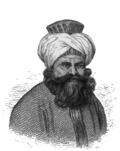
|
1784
|
1785
|
–ö–į–Ļ–ľ–į–ļ–į–ľ
|
[119]
|
|
|
|
|
Ibrahim Bey (2)
|
–Ě–Ķ–ľ–į—Ē –∑–ĺ–Ī—Ä–į–∂–Ķ–Ĺ–Ĺ—Ź
|
1784
|
1785
|
–ö–į–Ļ–ľ–į–ļ–į–ľ
|
[120]
|
|
| 139
|
|
Yeńüen Seyyid Mehmed PaŇüa (tr)
|
–Ě–Ķ–ľ–į—Ē –∑–ĺ–Ī—Ä–į–∂–Ķ–Ĺ–Ĺ—Ź
|
1785
|
1786
|
–Ď–Ķ–Ļ–Ľ–Ķ—Ä–Ī–Ķ–Ļ
|
[1][2][121]
|
|
|
|
|
Cezayirli Gazi Hasan PaŇüa
|
–Ě–Ķ–ľ–į—Ē –∑–ĺ–Ī—Ä–į–∂–Ķ–Ĺ–Ĺ—Ź
|
1786
|
1787
|
Admiral
|
[122]
|
|
| 140
|
|
Keki Abdi PaŇüa (1)
|
–Ě–Ķ–ľ–į—Ē –∑–ĺ–Ī—Ä–į–∂–Ķ–Ĺ–Ĺ—Ź
|
1787
|
1788
|
–Ď–Ķ–Ļ–Ľ–Ķ—Ä–Ī–Ķ–Ļ
|
[1][2][122]
|
|
| 141
|
|
Ismail PaŇüa the Tripolitanian (1)
|
–Ě–Ķ–ľ–į—Ē –∑–ĺ–Ī—Ä–į–∂–Ķ–Ĺ–Ĺ—Ź
|
1788
|
1789
|
–Ď–Ķ–Ļ–Ľ–Ķ—Ä–Ī–Ķ–Ļ
|
[1][123]
|
|
| 142
|
|
Keki Abdi PaŇüa (2)
|
–Ě–Ķ–ľ–į—Ē –∑–ĺ–Ī—Ä–į–∂–Ķ–Ĺ–Ĺ—Ź
|
1789
|
1789
|
–Ď–Ķ–Ļ–Ľ–Ķ—Ä–Ī–Ķ–Ļ
|
|
|
| 143
|
|
Ismail PaŇüa the Tripolitanian (2)
|
–Ě–Ķ–ľ–į—Ē –∑–ĺ–Ī—Ä–į–∂–Ķ–Ĺ–Ĺ—Ź
|
1789
|
1791
|
–Ď–Ķ–Ļ–Ľ–Ķ—Ä–Ī–Ķ–Ļ
|
|
|
| 144
|
|
Safranbolulu Izzet Mehmet PaŇüa
|
–Ě–Ķ–ľ–į—Ē –∑–ĺ–Ī—Ä–į–∂–Ķ–Ĺ–Ĺ—Ź
|
1791
|
1794
|
–Ď–Ķ–Ļ–Ľ–Ķ—Ä–Ī–Ķ–Ļ
|
[1][2][124][125]
|
|
| 145
|
|
Kayserili HacńĪ Salih PaŇüa
|
–Ě–Ķ–ľ–į—Ē –∑–ĺ–Ī—Ä–į–∂–Ķ–Ĺ–Ĺ—Ź
|
1794
|
1796
|
–Ď–Ķ–Ļ–Ľ–Ķ—Ä–Ī–Ķ–Ļ
|
[1][2][125]
|
Mamluk emirs Murad Bey and Ibrahim Bey continued to wield de facto power[125]
|
| –Ą–≥–ł–Ņ–Ķ—ā—Ā—Ć–ļ–į –ļ–į–ľ–Ņ–į–Ĺ—Ė—Ź –Ě–į–Ņ–ĺ–Ľ–Ķ–ĺ–Ĺ–į
|
| 146
|
|
LokmacńĪ HacńĪ Ebubekir PaŇüa
|
–Ě–Ķ–ľ–į—Ē –∑–ĺ–Ī—Ä–į–∂–Ķ–Ĺ–Ĺ—Ź
|
1796
|
1798
|
–Ď–Ķ–Ļ–Ľ–Ķ—Ä–Ī–Ķ–Ļ
|
[1][2][126][note 16]
|
–§—Ä–į–Ĺ—Ü—É–∑—Ć–ļ—Ė –≤—Ė–Ļ—Ā—Ć–ļ–į –≤–ł—Ā–į–ī–ł–Ľ–ł—Ā—Ź –≤ –ź–Ľ–Ķ–ļ—Ā–į–Ĺ–ī—Ä—Ė—ó —Ė –ī—Ė–Ļ—ą–Ľ–ł –ī–ĺ –ö–į—ó—Ä–į[126]
|
| 147
|
|
Abdullah PaŇüa al-Azm
|
–Ě–Ķ–ľ–į—Ē –∑–ĺ–Ī—Ä–į–∂–Ķ–Ĺ–Ĺ—Ź
|
1798
|
1799
|
–Ď–Ķ–Ļ–Ľ–Ķ—Ä–Ī–Ķ–Ļ
|
[1][2][127][note 17]
|
–Ě–į–Ņ—Ä–į–≤–Ľ–Ķ–Ĺ–ł–Ļ —Ā—É–Ľ—ā–į–Ĺ–ĺ–ľ, –Ě–į–Ņ–ĺ–Ľ–Ķ–ĺ–Ĺ —Ā—Ö–≤–į–Ľ–ł–≤ –Ļ–ĺ–≥–ĺ –Ĺ–į –Ņ–ĺ—Ā–į–ī—Ė[127]
|
| 147
|
|
Nasuh PaŇüa al-Azm
|
–Ě–Ķ–ľ–į—Ē –∑–ĺ–Ī—Ä–į–∂–Ķ–Ĺ–Ĺ—Ź
|
1800
|
1801
|
–Ď–Ķ–Ļ–Ľ–Ķ—Ä–Ī–Ķ–Ļ
|
[1][2][128][note 18]
|
–§—Ä–į–Ĺ—Ü—É–∑–ł –Ņ–ĺ–ļ–ł–Ĺ—É–Ľ–ł –Ą–≥–ł–Ņ–Ķ—ā
|
| 148
|
|
Ebu Merak Mehmed PaŇüa
|
–Ě–Ķ–ľ–į—Ē –∑–ĺ–Ī—Ä–į–∂–Ķ–Ĺ–Ĺ—Ź
|
1801
|
1801
|
–Ď–Ķ–Ļ–Ľ–Ķ—Ä–Ī–Ķ–Ļ
|
[1][2][129][130][131]
|
|
| 149
|
|
Koca H√ľsrev Mehmed PaŇüa (1)
|
–Ě–Ķ–ľ–į—Ē –∑–ĺ–Ī—Ä–į–∂–Ķ–Ĺ–Ĺ—Ź
|
1802
|
1803
|
–Ď–Ķ–Ļ–Ľ–Ķ—Ä–Ī–Ķ–Ļ
|
[1][2][130][132]
|
|
|
|
|
Tahir PaŇüa
|
–Ě–Ķ–ľ–į—Ē –∑–ĺ–Ī—Ä–į–∂–Ķ–Ĺ–Ĺ—Ź
|
1803
|
1803
|
–ö–į–Ļ–ľ–į–ļ–į–ľ
|
[133]
|
–õ—Ė–ī–Ķ—Ä –į–Ľ–Ī–į–Ĺ—Ā—Ć–ļ–ł—Ö –≤—Ė–Ļ—Ā—Ć–ļ, –∑–į—Ö–ĺ–Ņ–ł–≤ –≤–Ľ–į–ī—É, —Ā—ā—Ä–į—á–Ķ–Ĺ–ł–Ļ —Ź–Ĺ–ł—á–į—Ä–į–ľ–ł —á–Ķ—Ä–Ķ–∑ 26 –ī–Ĺ—Ė–≤[134]
|
| –ú—É—Ö–į–ľ–ľ–Ķ–ī –ź–Ľ—Ė –Ą–≥–ł–Ņ–Ķ—ā—Ā—Ć–ļ–ł–Ļ –Ņ–ĺ—Ā–Ľ–į–Ĺ–ł–Ļ —Ā—É–Ľ—ā–į–Ĺ–ĺ–ľ –≤–ĺ—é–≤–į—ā–ł –∑ —Ą—Ä–į–Ĺ—Ü—É–∑–į–ľ–ł —É 1801, –∑–į—Ö–ĺ–Ņ–ł–≤ —Ā–ł–Ľ–ĺ—é –≤–Ľ–į–ī—É –≤ –Ą–≥–ł–Ņ—ā—Ė
|
| 150
|
|
M√ľftizade Ahmed PaŇüa
|
–Ě–Ķ–ľ–į—Ē –∑–ĺ–Ī—Ä–į–∂–Ķ–Ĺ–Ĺ—Ź
|
1803
|
1803
|
Governor
|
[1][135][136]
|
–í—Ė–ī—Ė–Ī—Ä–į–≤ –≤–Ľ–į–ī—É —É –į–Ľ–Ī–į–Ĺ—Ü—Ė–≤[136]
|
|
|
|
Ibrahim Bey (3)
|
–Ě–Ķ–ľ–į—Ē –∑–ĺ–Ī—Ä–į–∂–Ķ–Ĺ–Ĺ—Ź
|
1803
|
1804
|
–ö–į–Ļ–ľ–į–ļ–į–ľ
|
[137][138]
|
–ü–ĺ—Ā—ā–į–≤–Ľ–Ķ–Ĺ–ł–Ļ –ú—É—Ö–į–ľ–ľ–Ķ–ī–ĺ–ľ –ź–Ľ—Ė –Ą–≥–ł–Ņ–Ķ—ā—Ā—Ć–ļ–ł–ľ[137]
|
| 151
|
|
Trabluslu Ali PaŇüa (–ĺ–ī–Ĺ–ĺ—á–į—Ā–Ĺ–ĺ)
|
–Ě–Ķ–ľ–į—Ē –∑–ĺ–Ī—Ä–į–∂–Ķ–Ĺ–Ĺ—Ź
|
1803
|
1804
|
–Ď–Ķ–Ļ–Ľ–Ķ—Ä–Ī–Ķ–Ļ
|
[1][2][139]
|
–í—Ė–ī–Ņ—Ä–į–≤–Ľ–Ķ–Ĺ–ł–Ļ –ĺ—Ā–ľ–į–Ĺ—Ü—Ź–ľ–ł –≤ –Ľ–ł–Ņ–Ĺ—Ė, —Č–ĺ–Ī –∑–į–Ī—Ä–į—ā–ł –Ą–≥–ł–Ņ–Ķ—ā —É –į–Ľ–Ī–į–Ĺ—Ü—Ė–≤, –į–Ľ–Ķ –Ī—É–≤ —É–Ī–ł—ā–ł–Ļ[139]
|
| 152
|
|
Koca H√ľsrev Mehmed PaŇüa (2)
|
–Ě–Ķ–ľ–į—Ē –∑–ĺ–Ī—Ä–į–∂–Ķ–Ĺ–Ĺ—Ź
|
1804
|
1804
|
–Ď–Ķ–Ļ–Ľ–Ķ—Ä–Ī–Ķ–Ļ
|
[140]
|
–ú–į—Ä—Ė–ĺ–Ĺ–Ķ—ā–ļ–į –ú—É—Ö–į–ľ–ľ–Ķ–ī–į –ź–Ľ—Ė –Ą–≥–ł–Ņ–Ķ—ā—Ā—Ć–ļ–ĺ–≥–ĺ[140]
|
| 153
|
–•—É—Ä–į—ą–ł–ī –ź—Ö–ľ–Ķ–ī-–Ņ–į—ą–į
|
Hurshid Ahmed PaŇüa
|
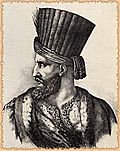
|
1804
|
1805
|
–Ď–Ķ–Ļ–Ľ–Ķ—Ä–Ī–Ķ–Ļ
|
[1][2][141][142]
|
–ü–ĺ—Ā—ā–į–≤–Ľ–Ķ–Ĺ–ł–Ļ –ú—É—Ö–į–ľ–ľ–Ķ–ī–ĺ–ľ –ź–Ľ—Ė –Ą–≥–ł–Ņ–Ķ—ā—Ā—Ć–ļ–ł–ľ
|
| 154
|
–ú—É—Ö–į–ľ–ľ–Ķ–ī –ź–Ľ—Ė –Ą–≥–ł–Ņ–Ķ—ā—Ā—Ć–ļ–ł–Ļ
|
Muhammad Ali
|
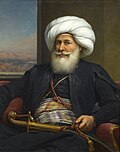
|
1805
|
–ú—É—Ö–į–ľ–ľ–Ķ–ī–ĺ–ľ –ź–Ľ—Ė –Ą–≥–ł–Ņ–Ķ—ā—Ā—Ć–ļ–ł–ľ –Ī—É–Ľ–į –∑–į—Ā–Ĺ–ĺ–≤–į–Ĺ–į –Ĺ–ĺ–≤–į –ī–ł–Ĺ–į—Ā—ā—Ė—Ź —Ā–Ņ–į–ī–ļ–ĺ–≤–ĺ—ó –≤–Ľ–į–ī–ł
|


























